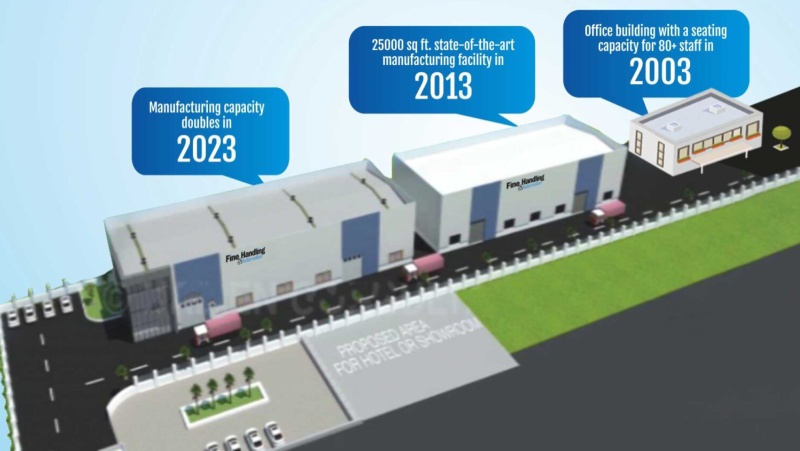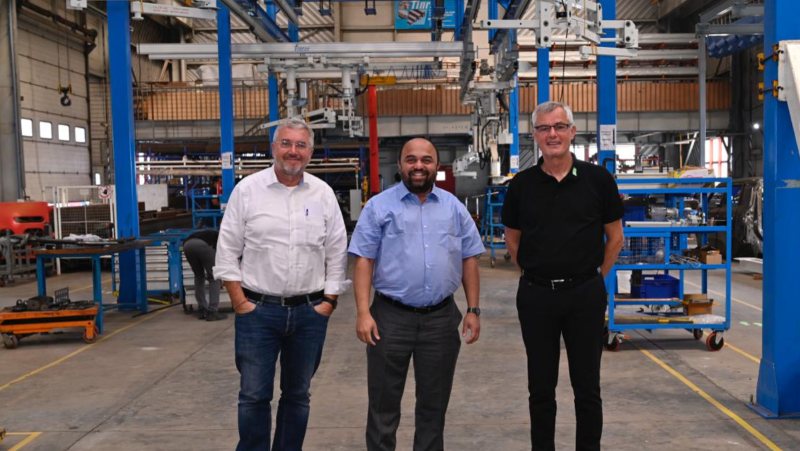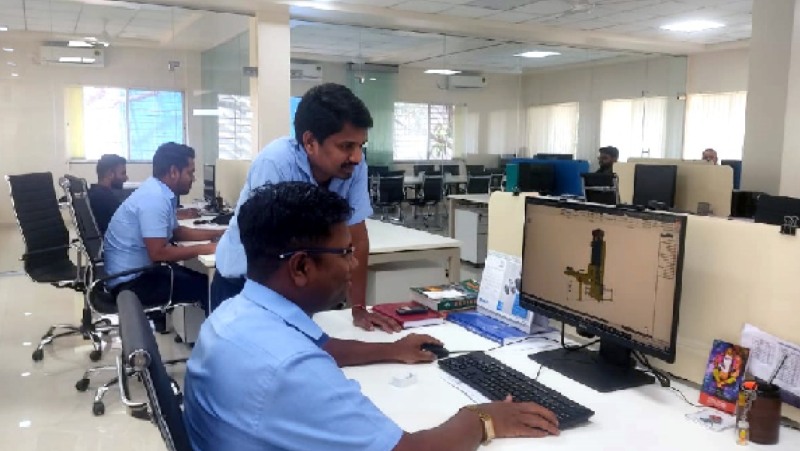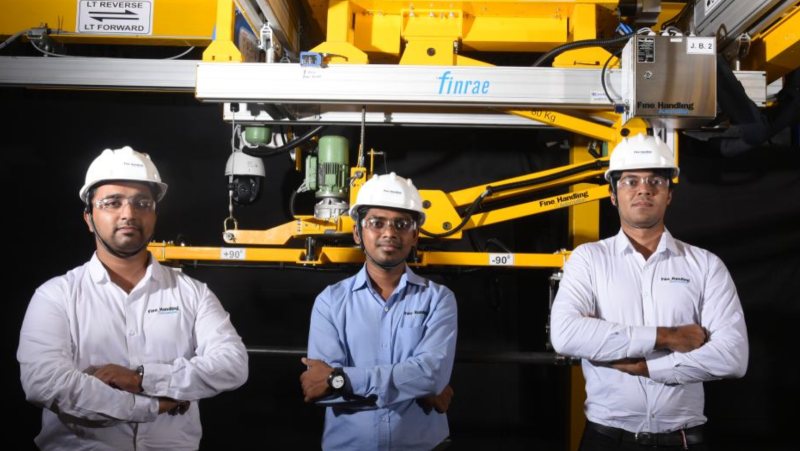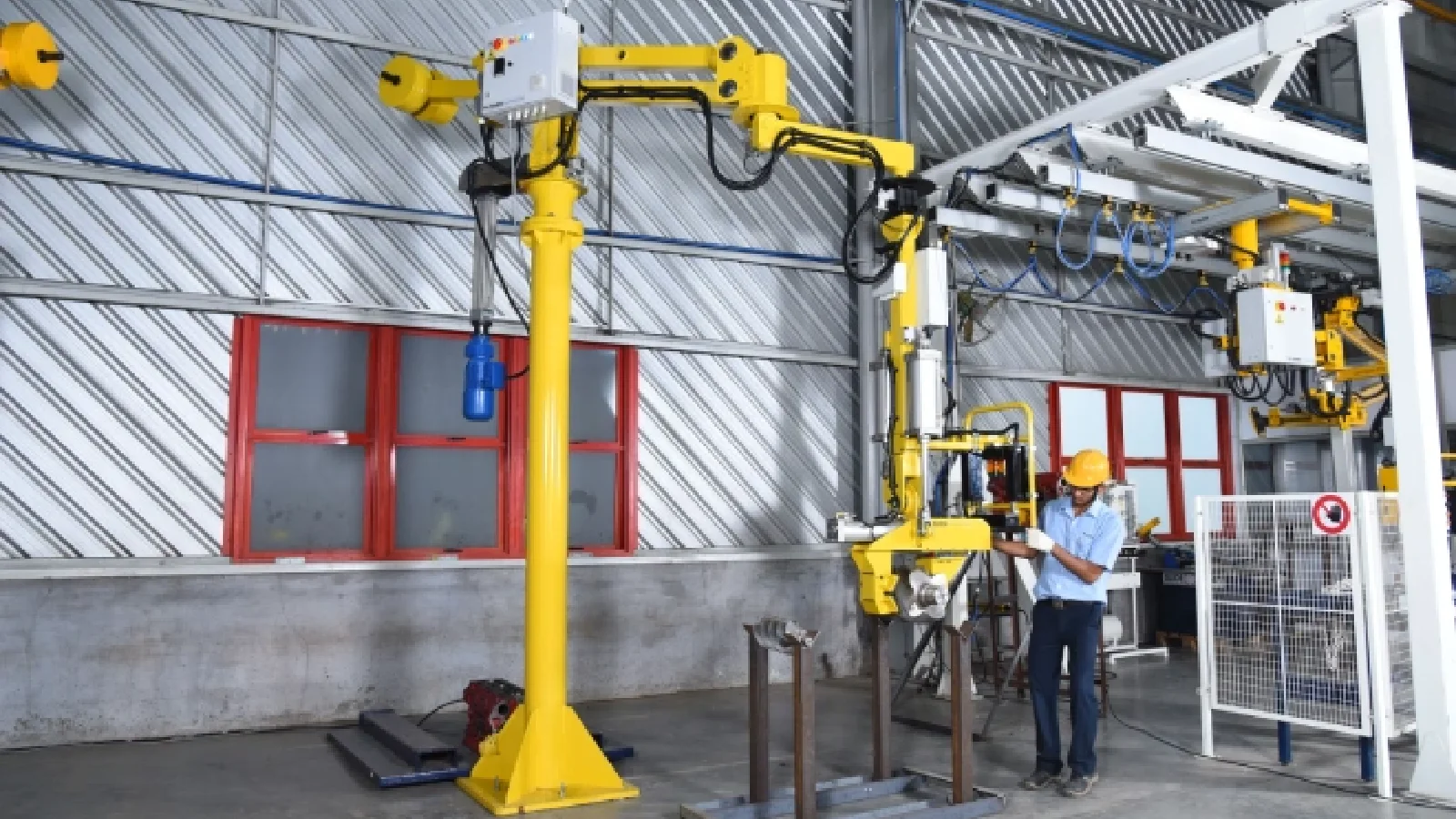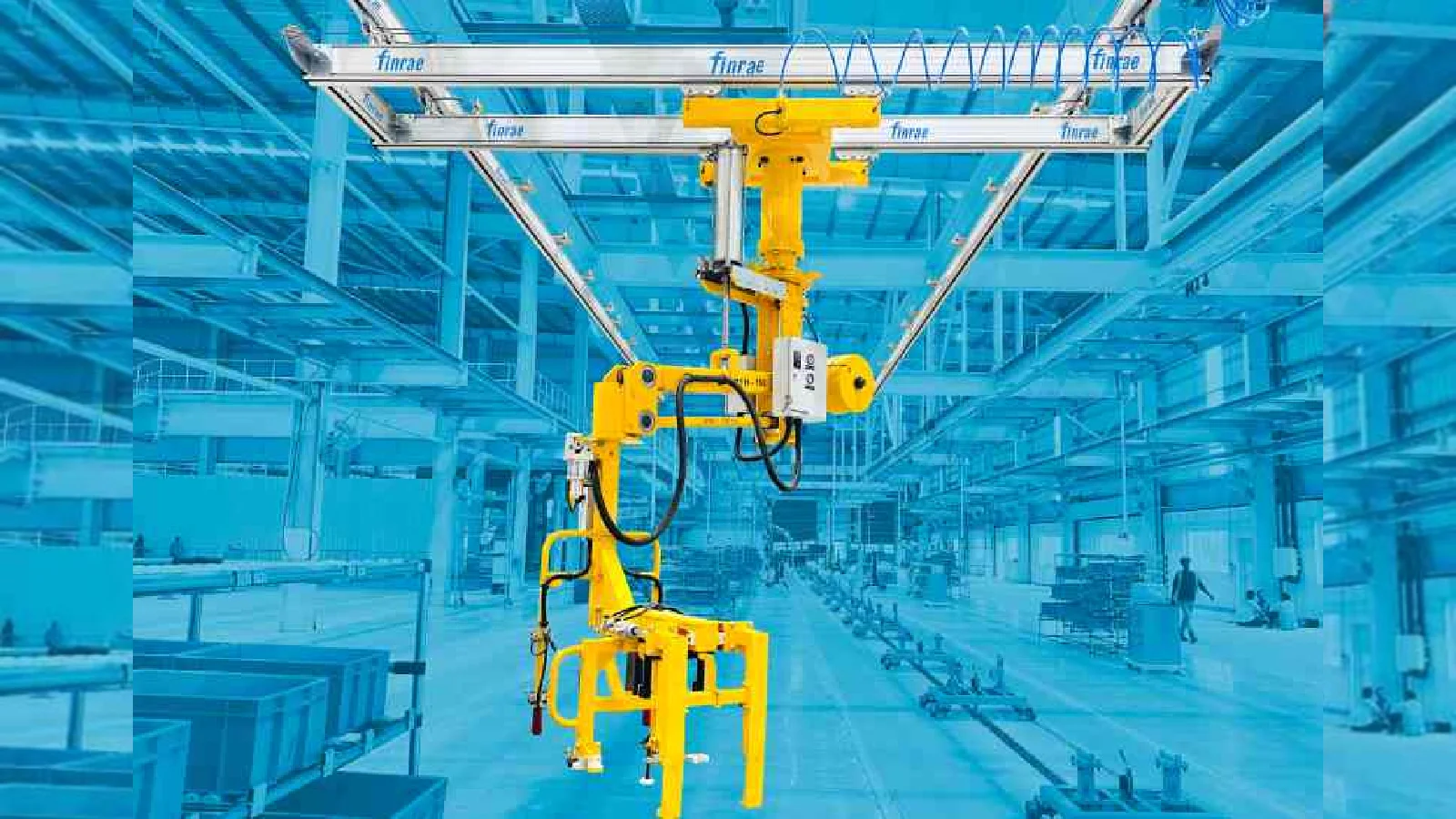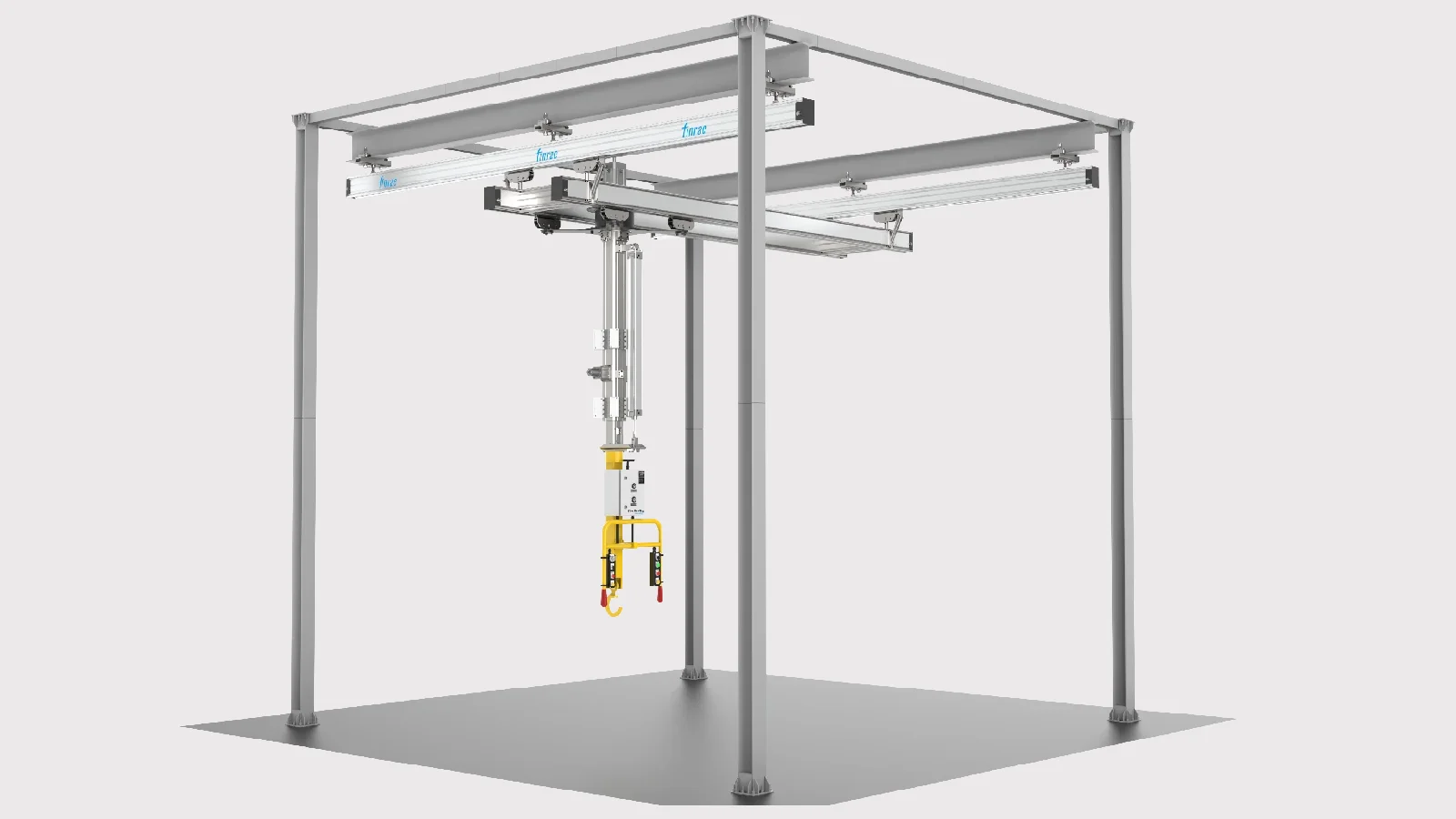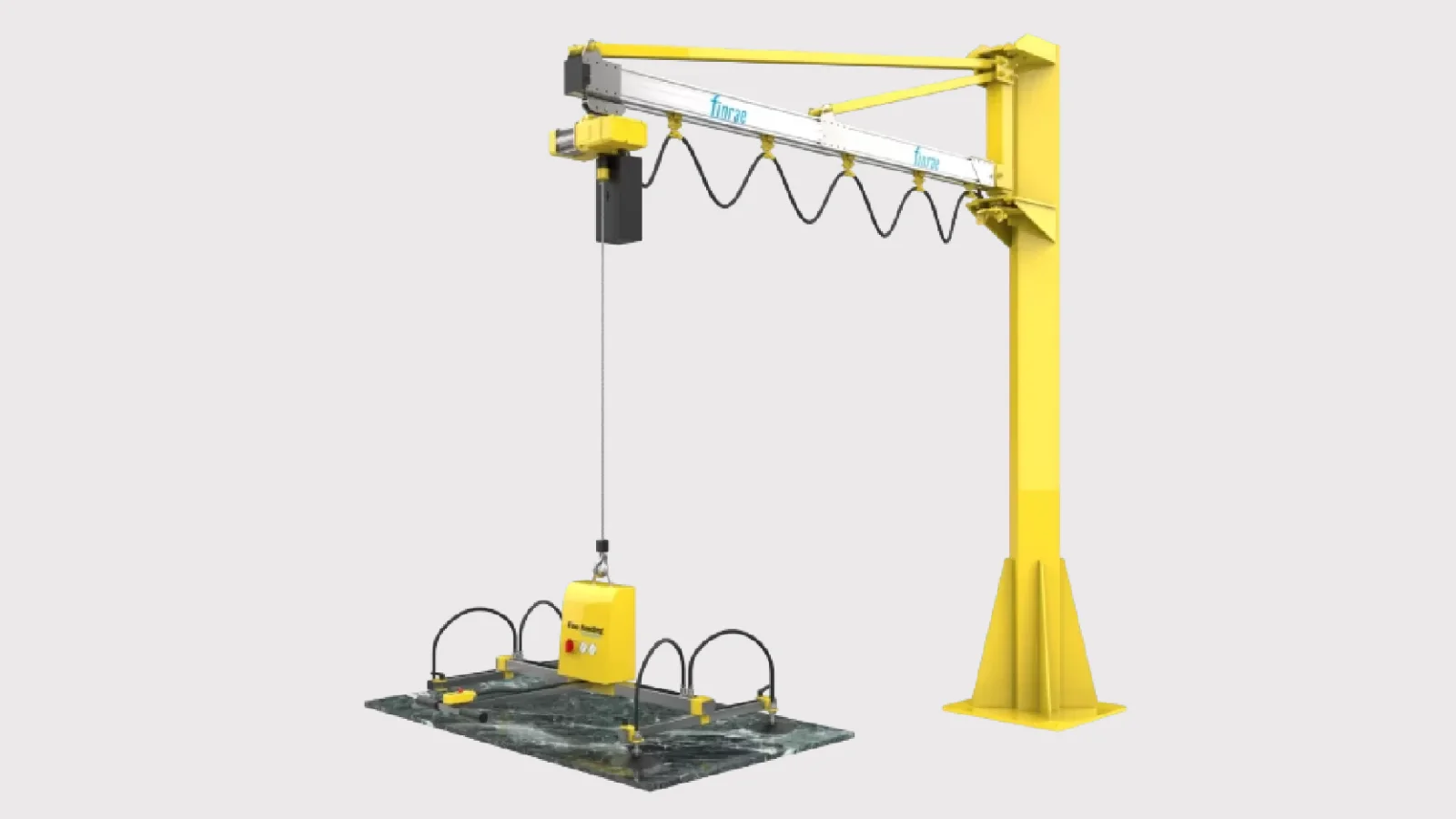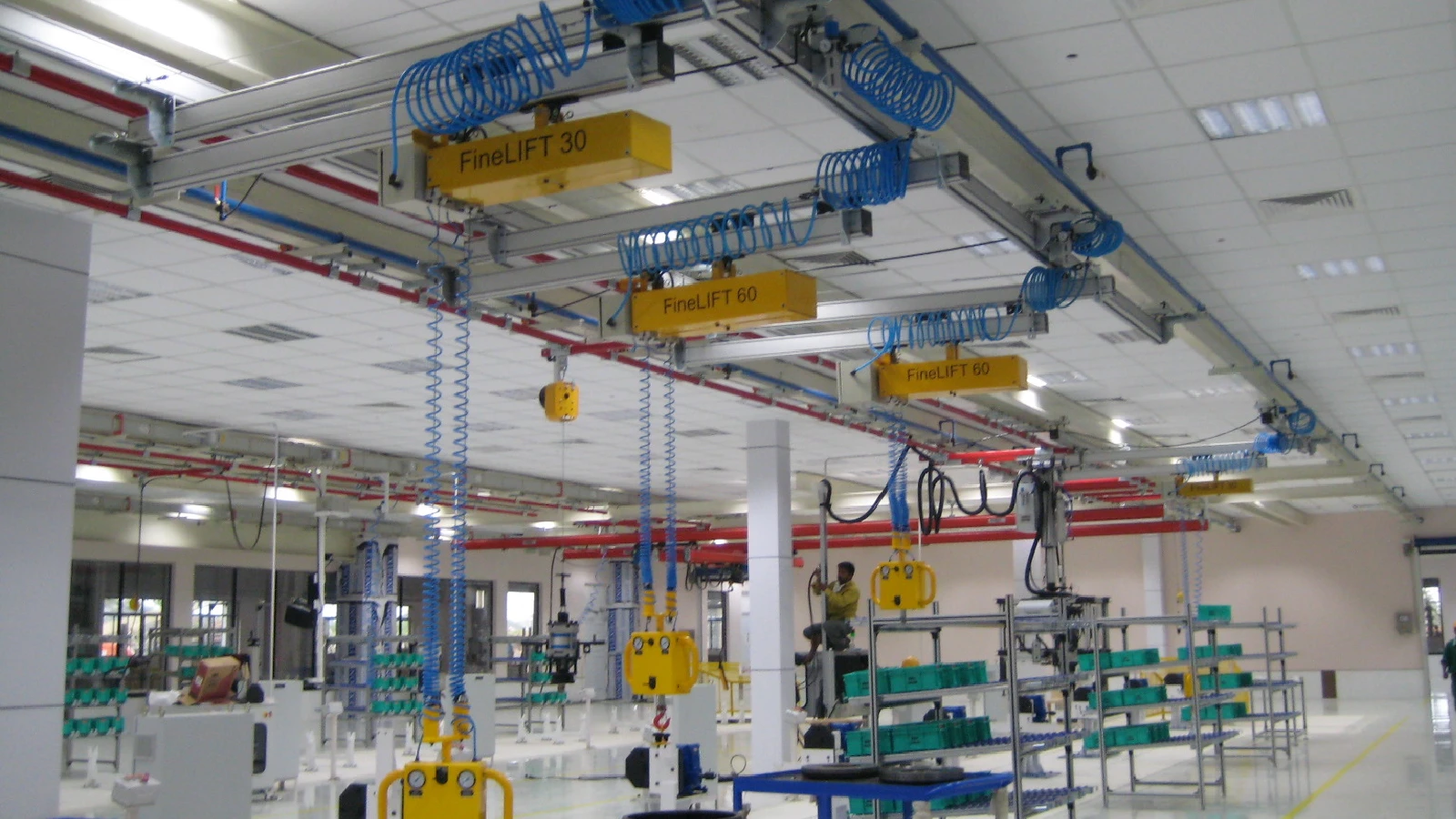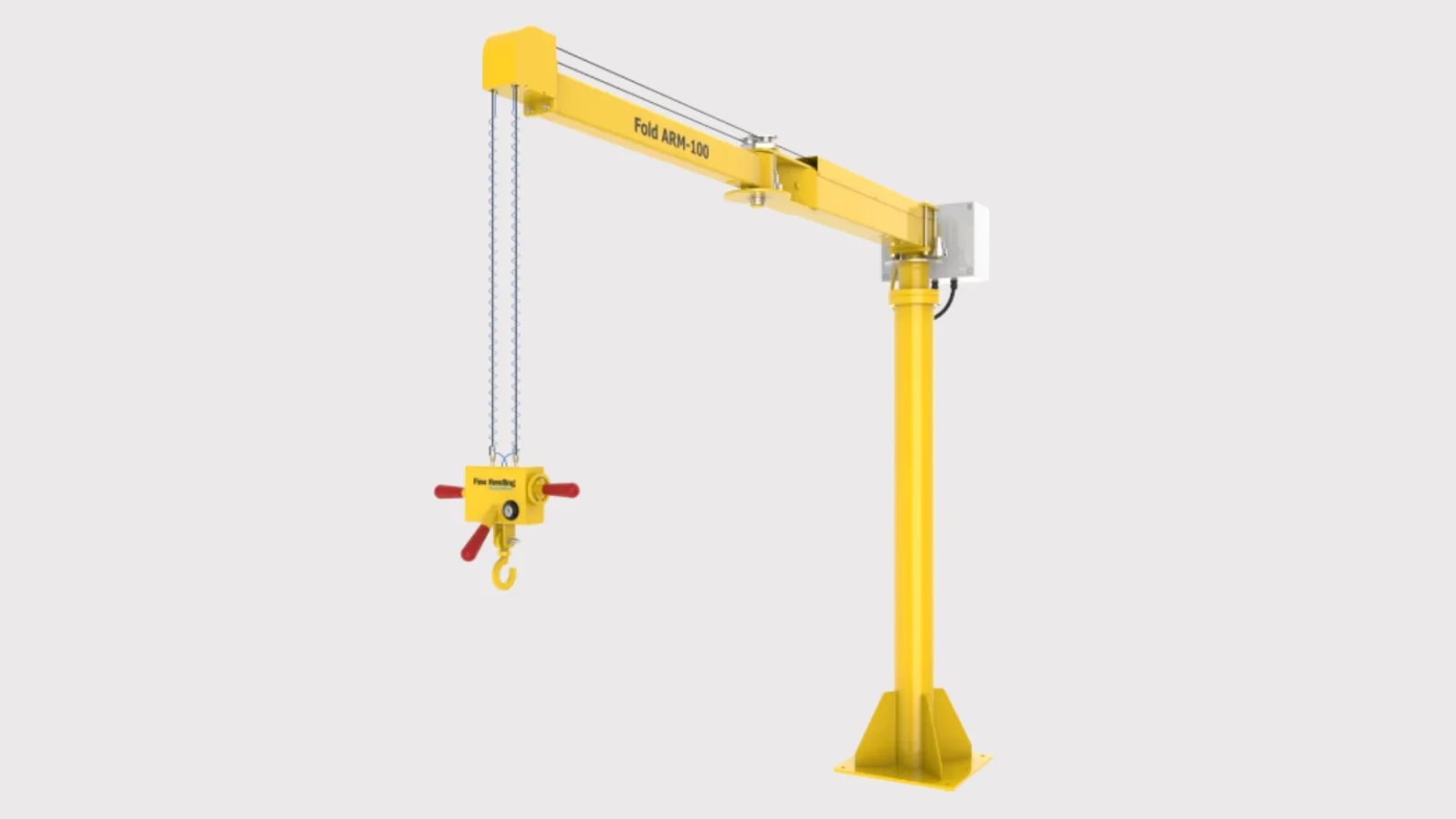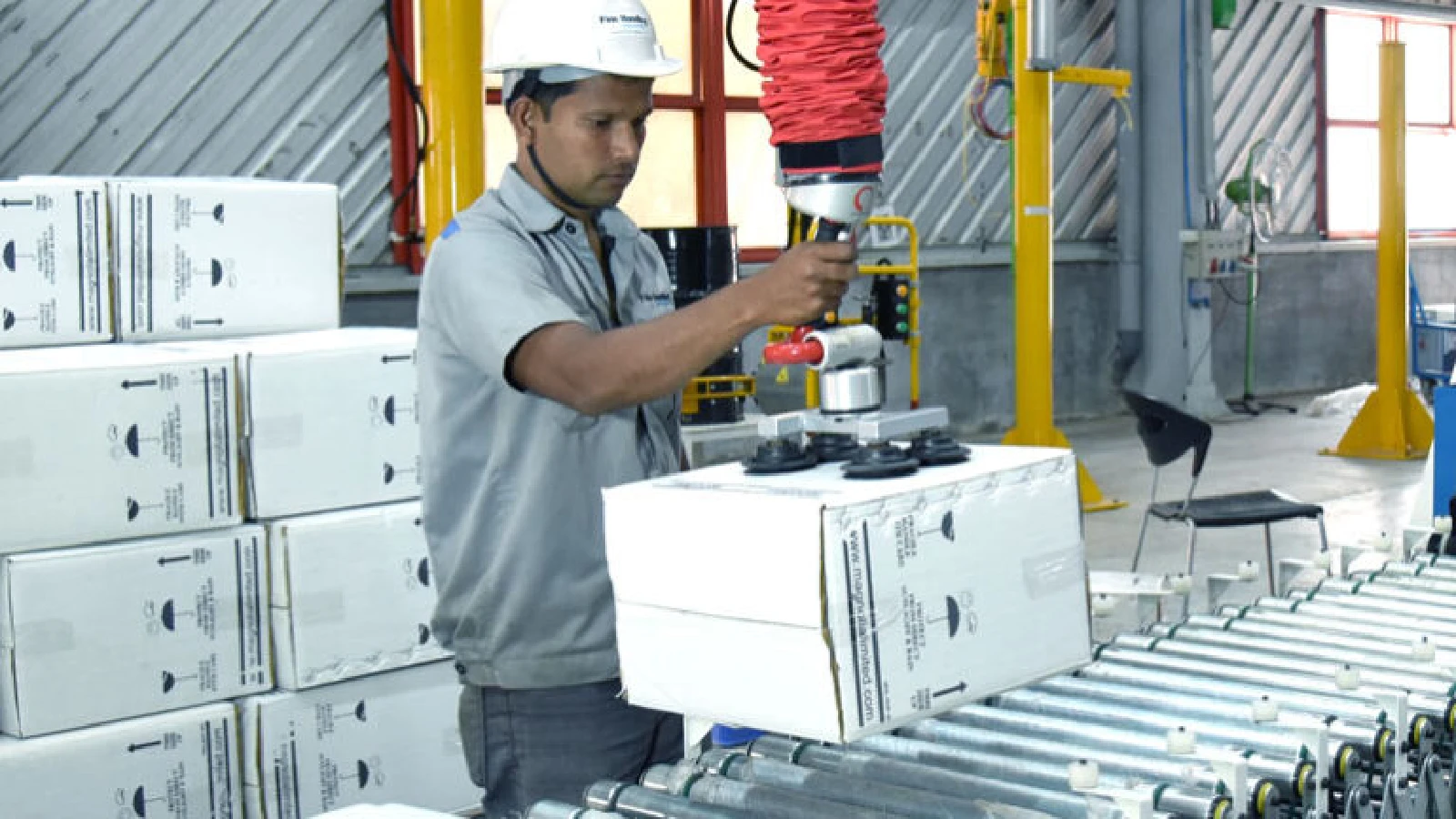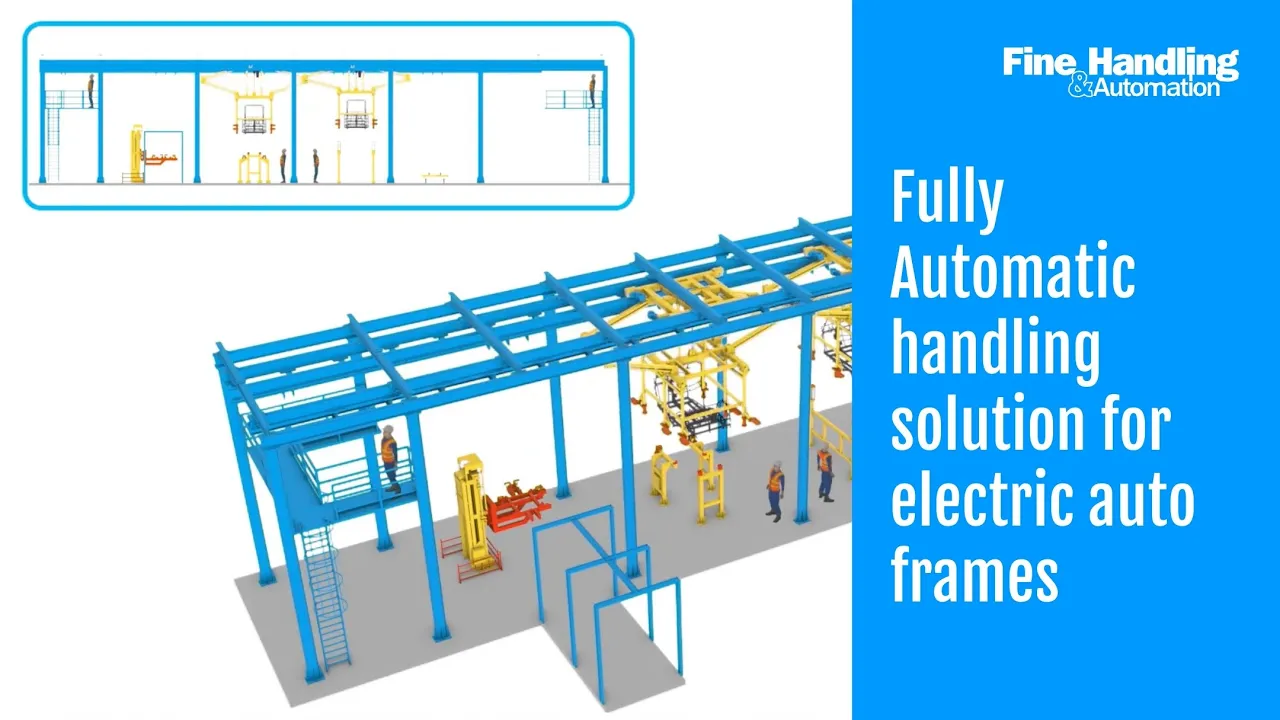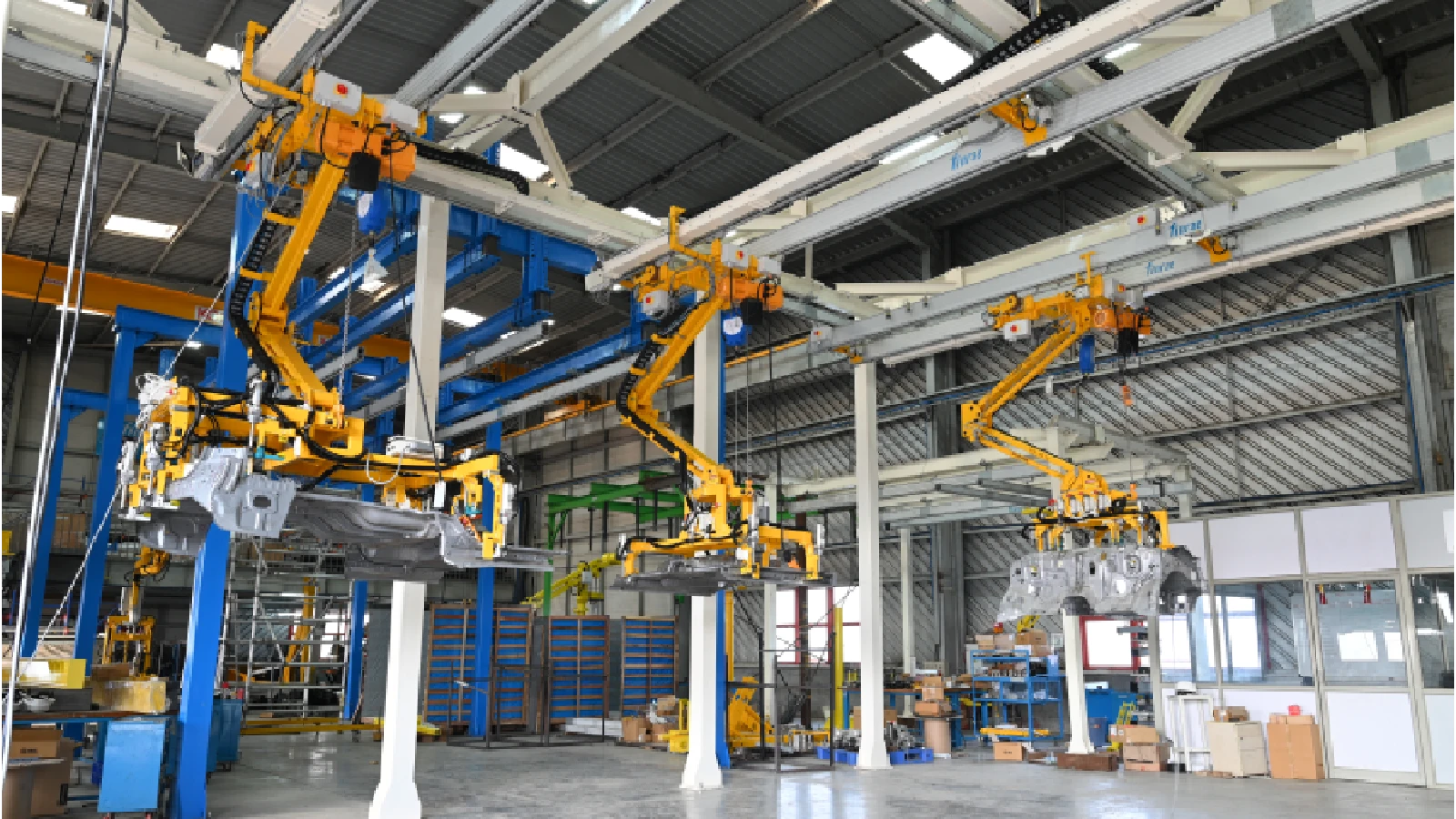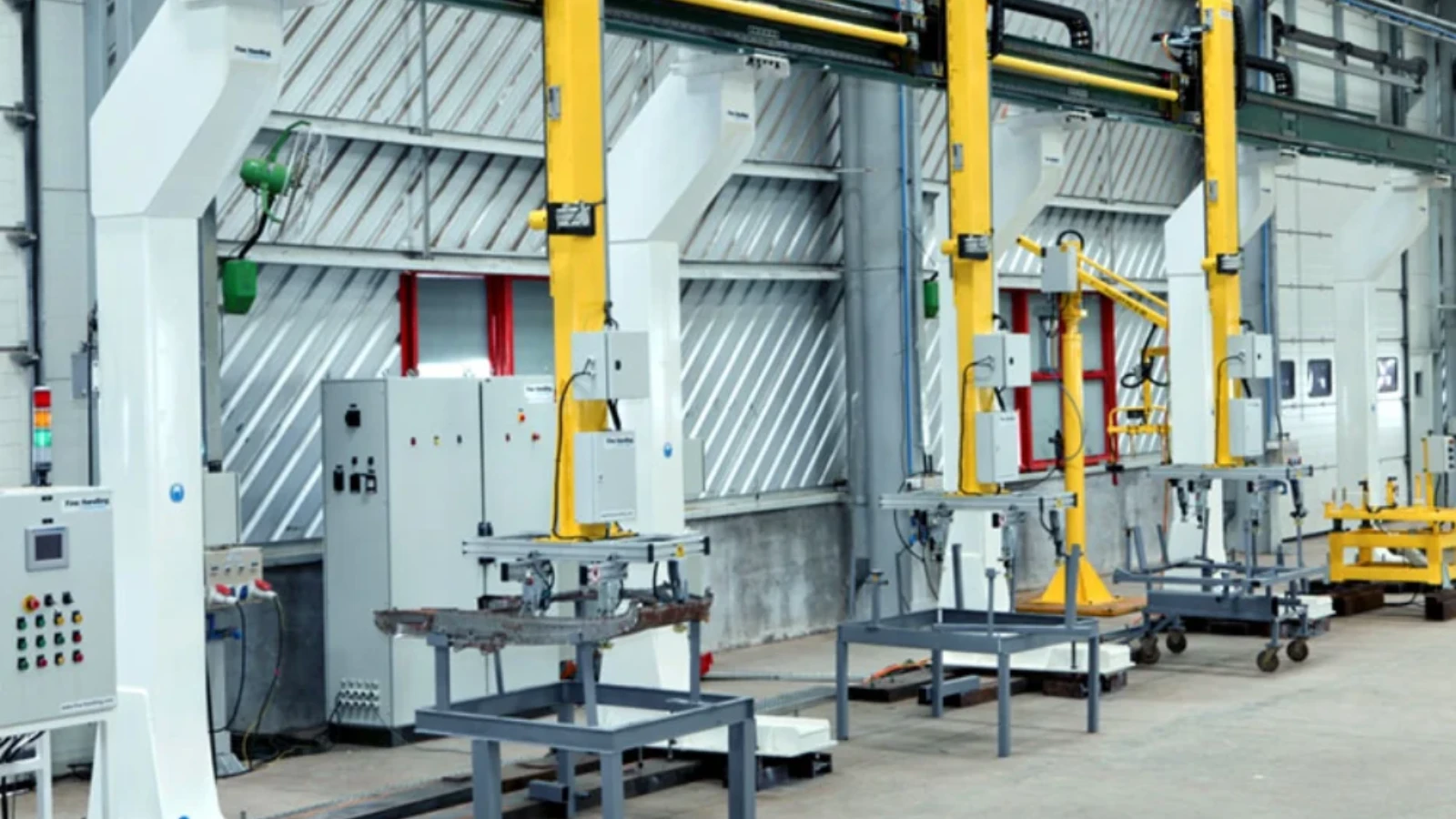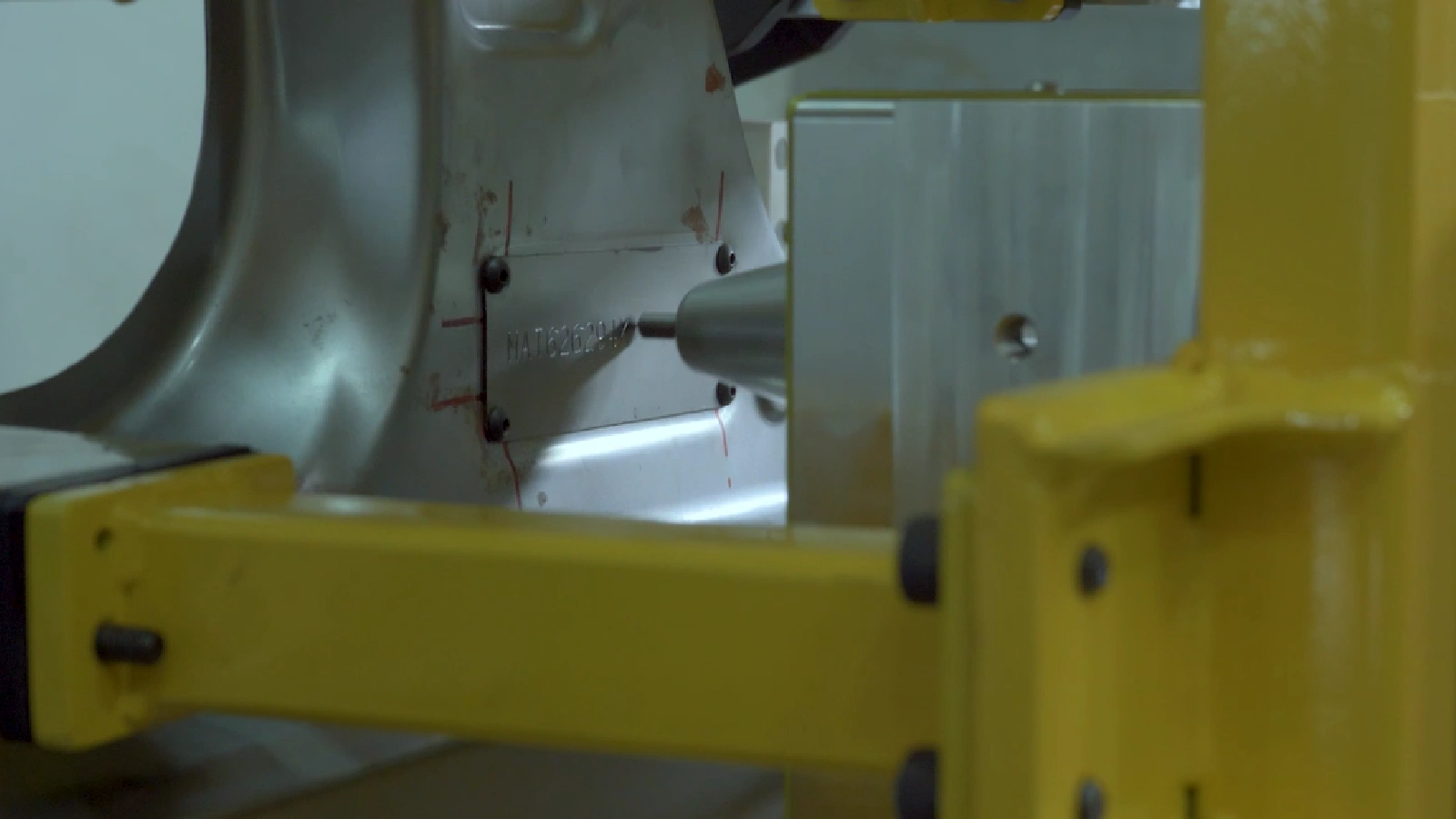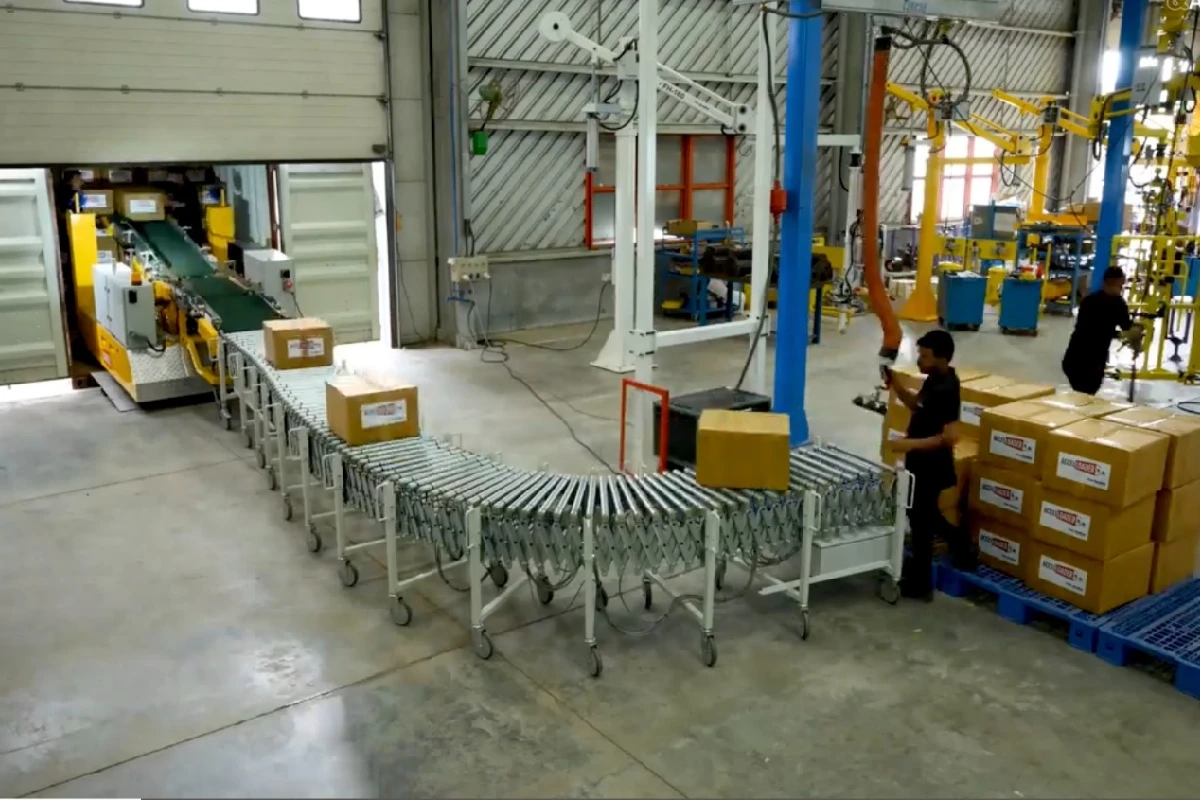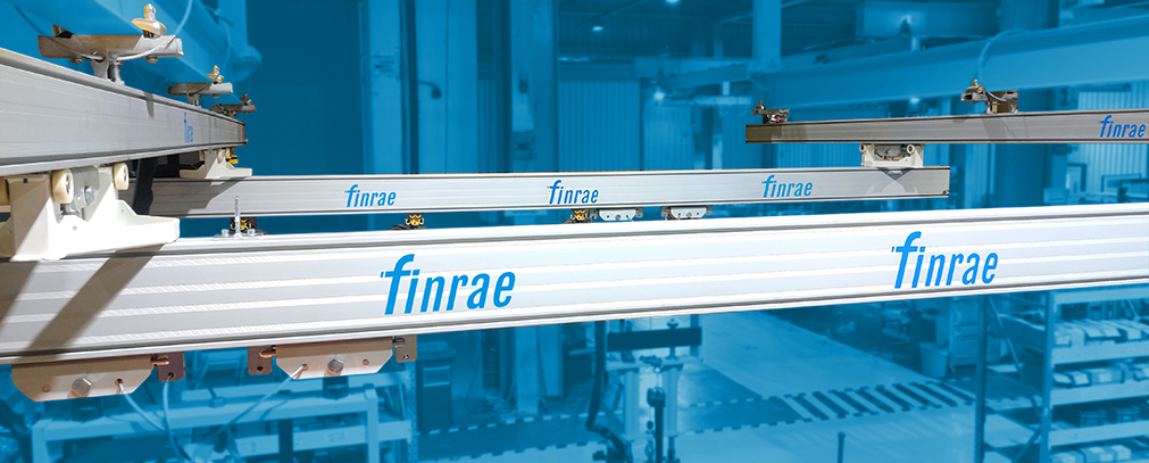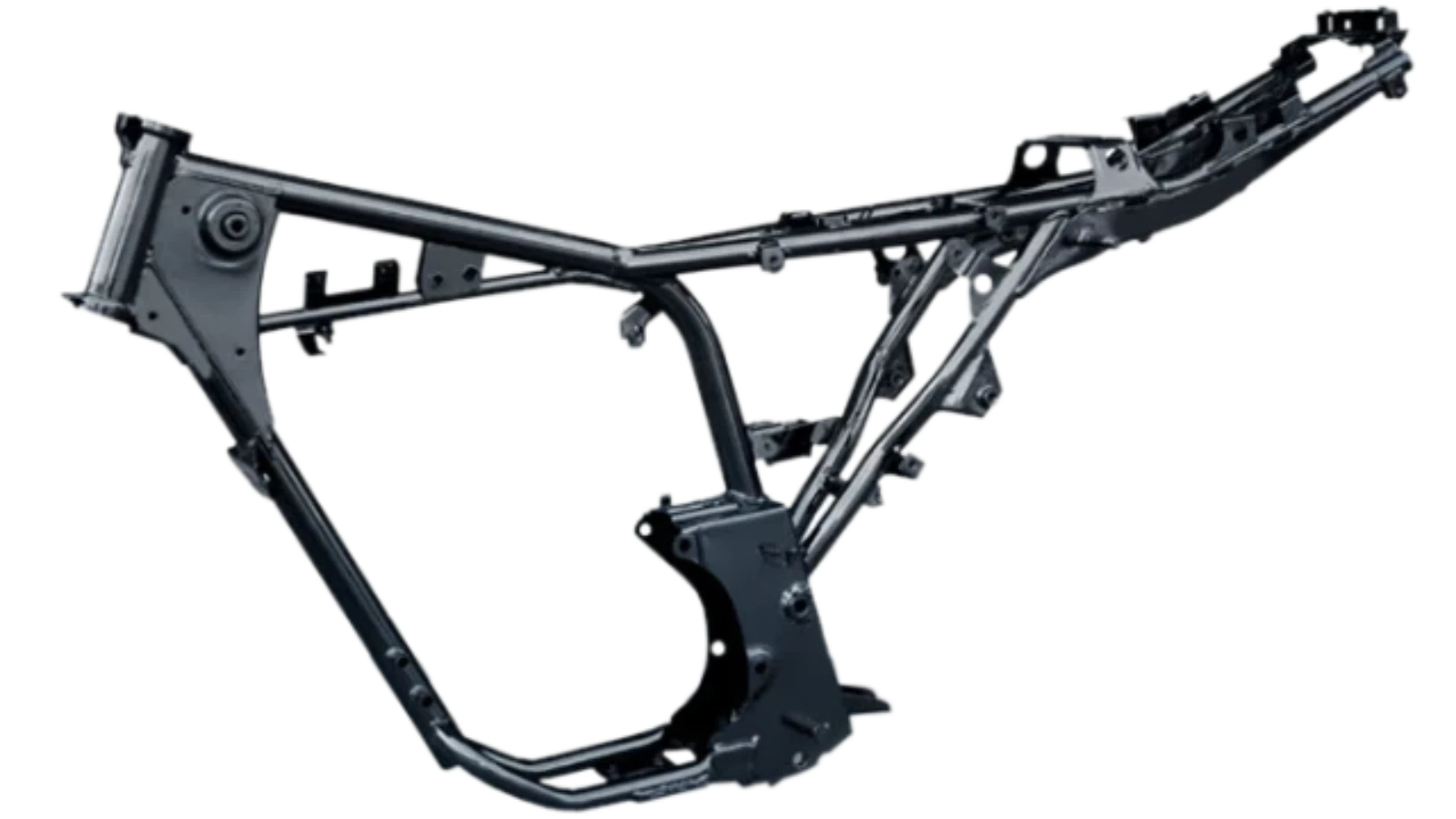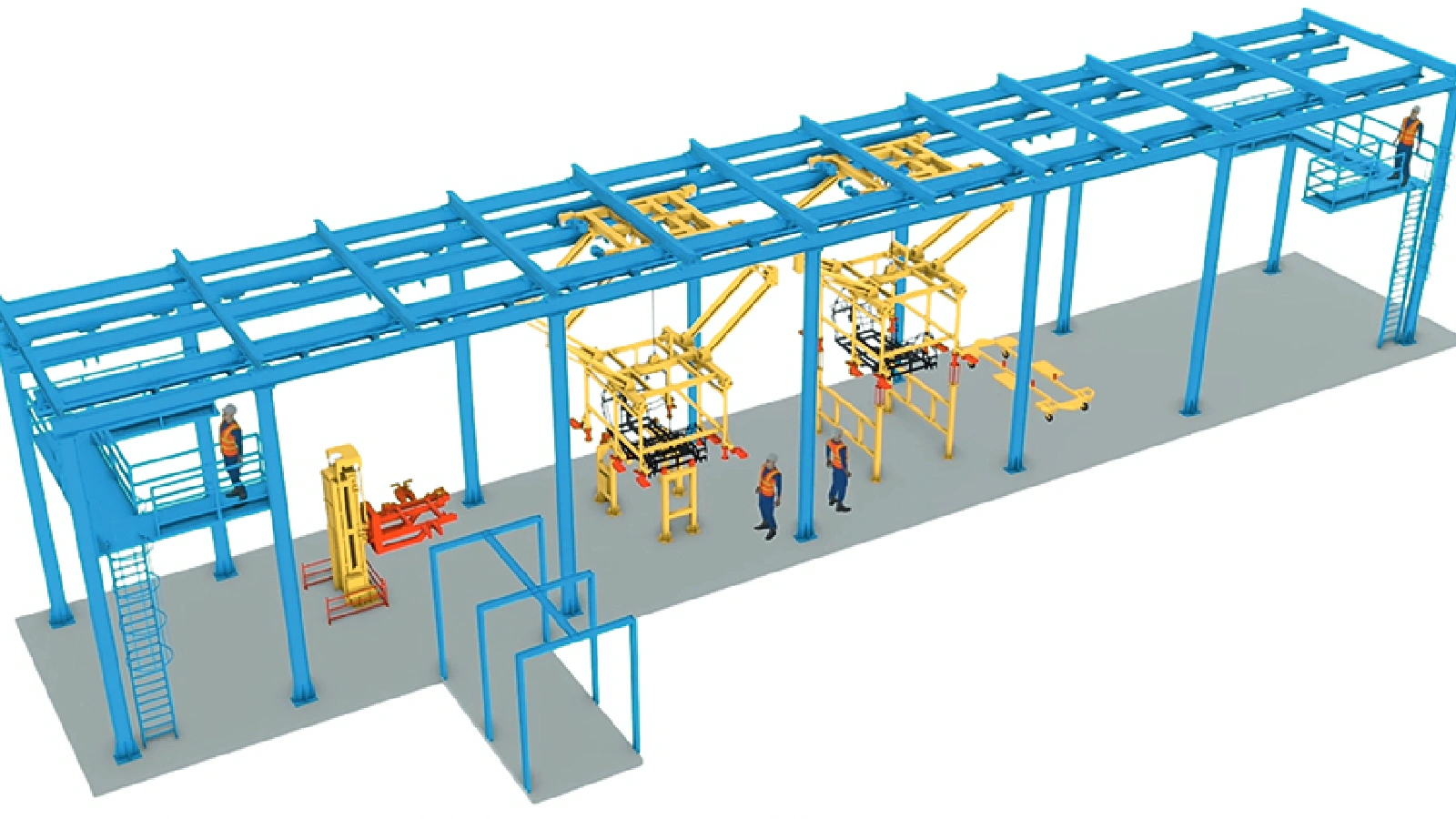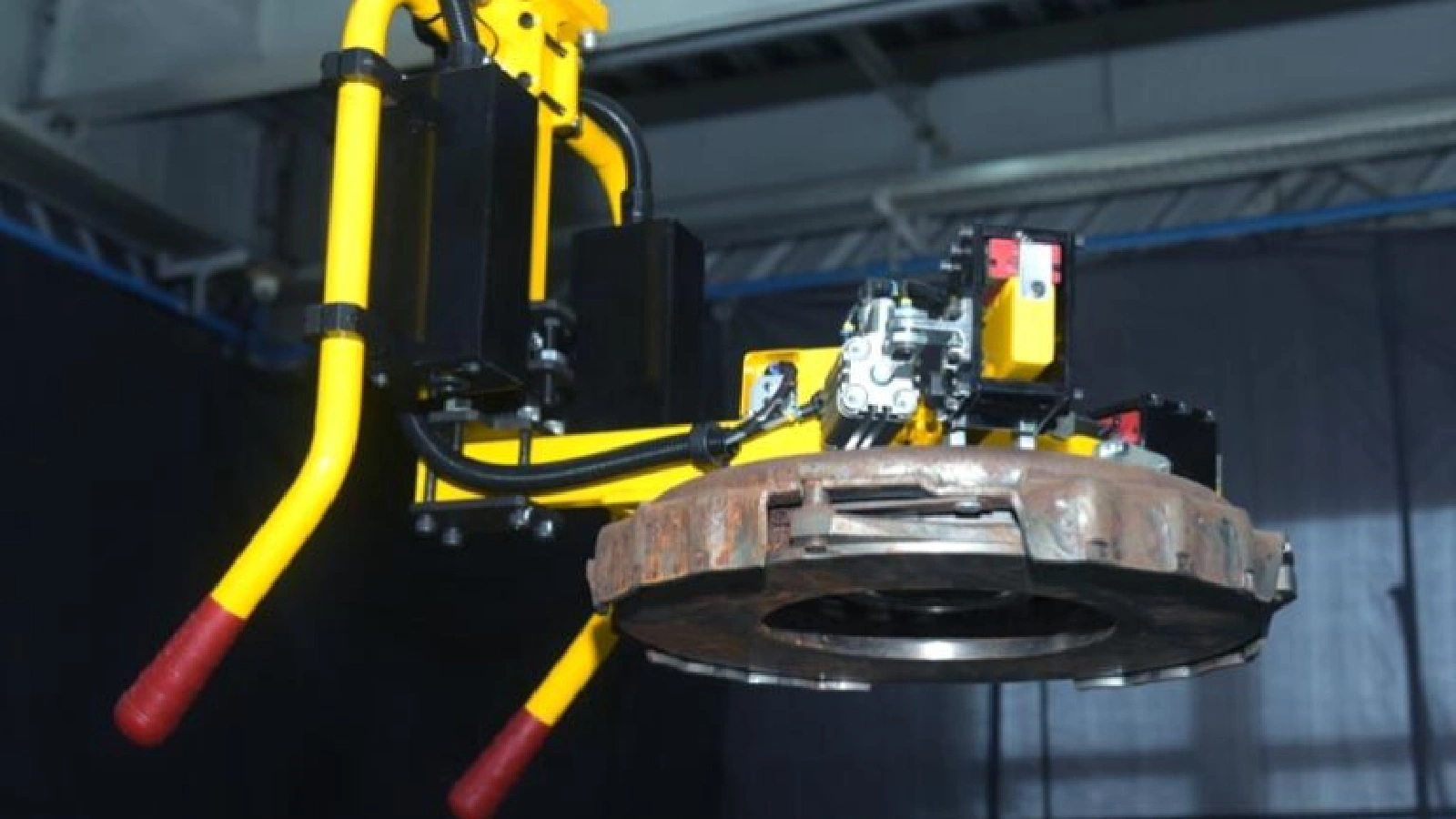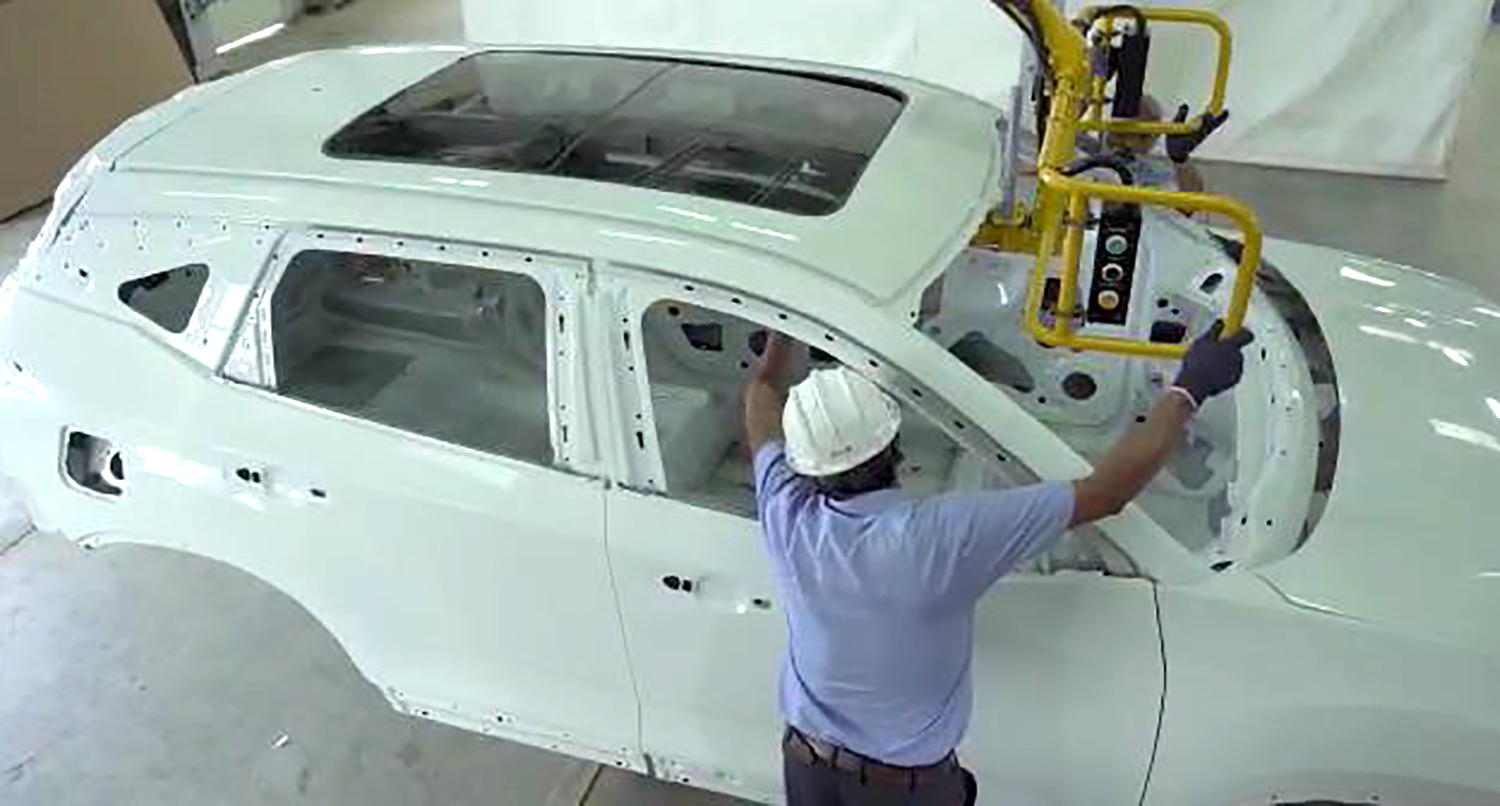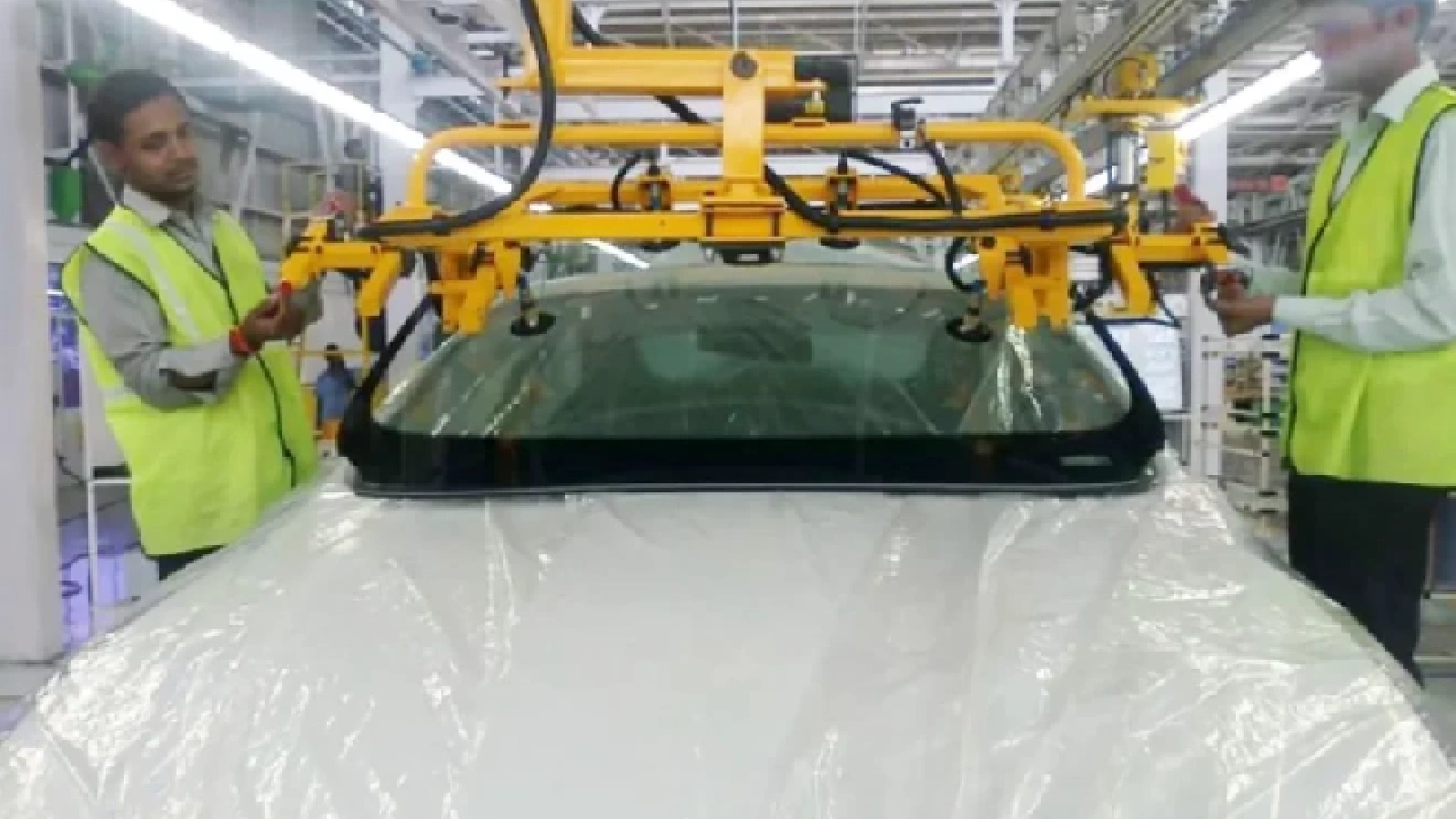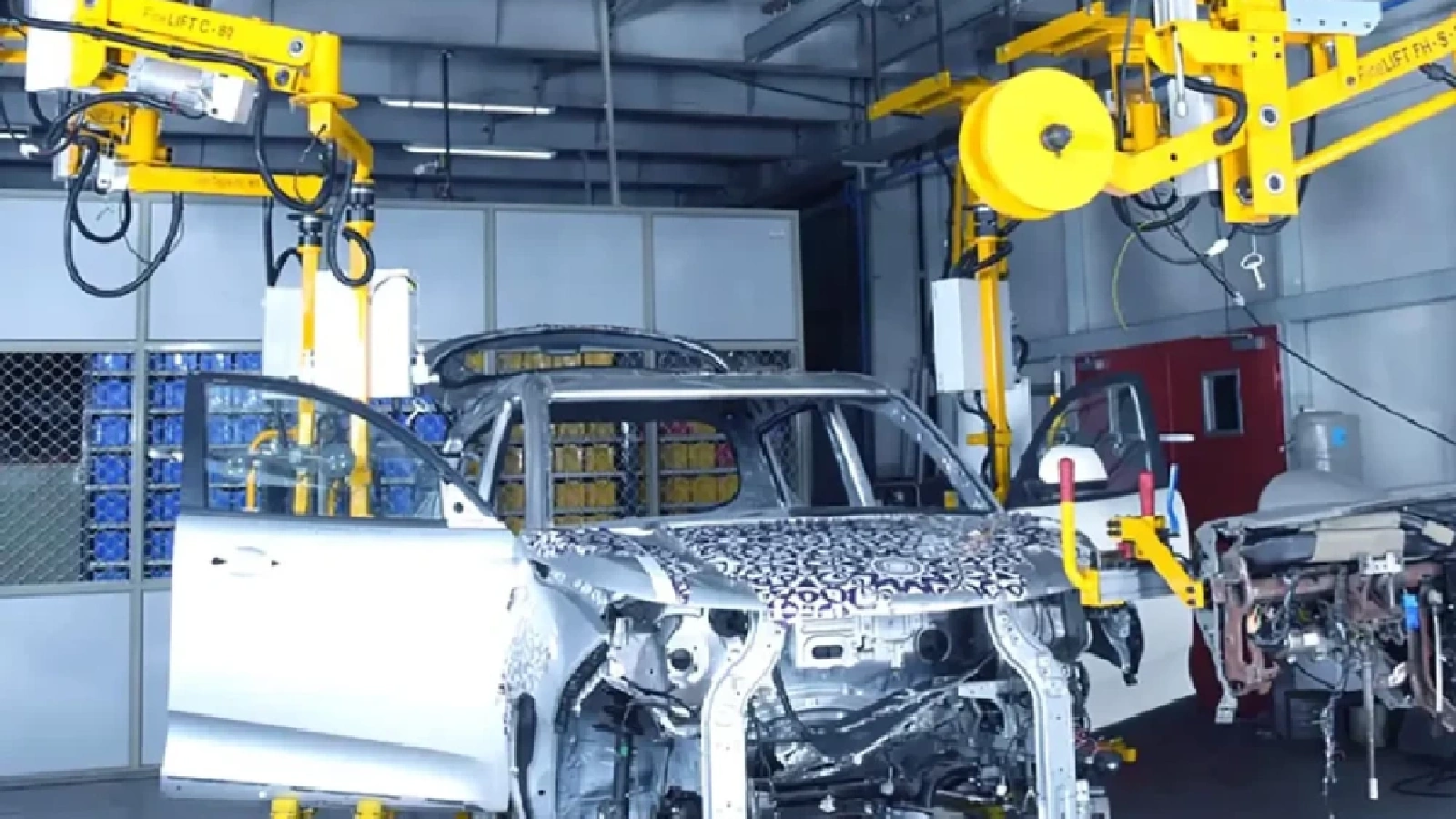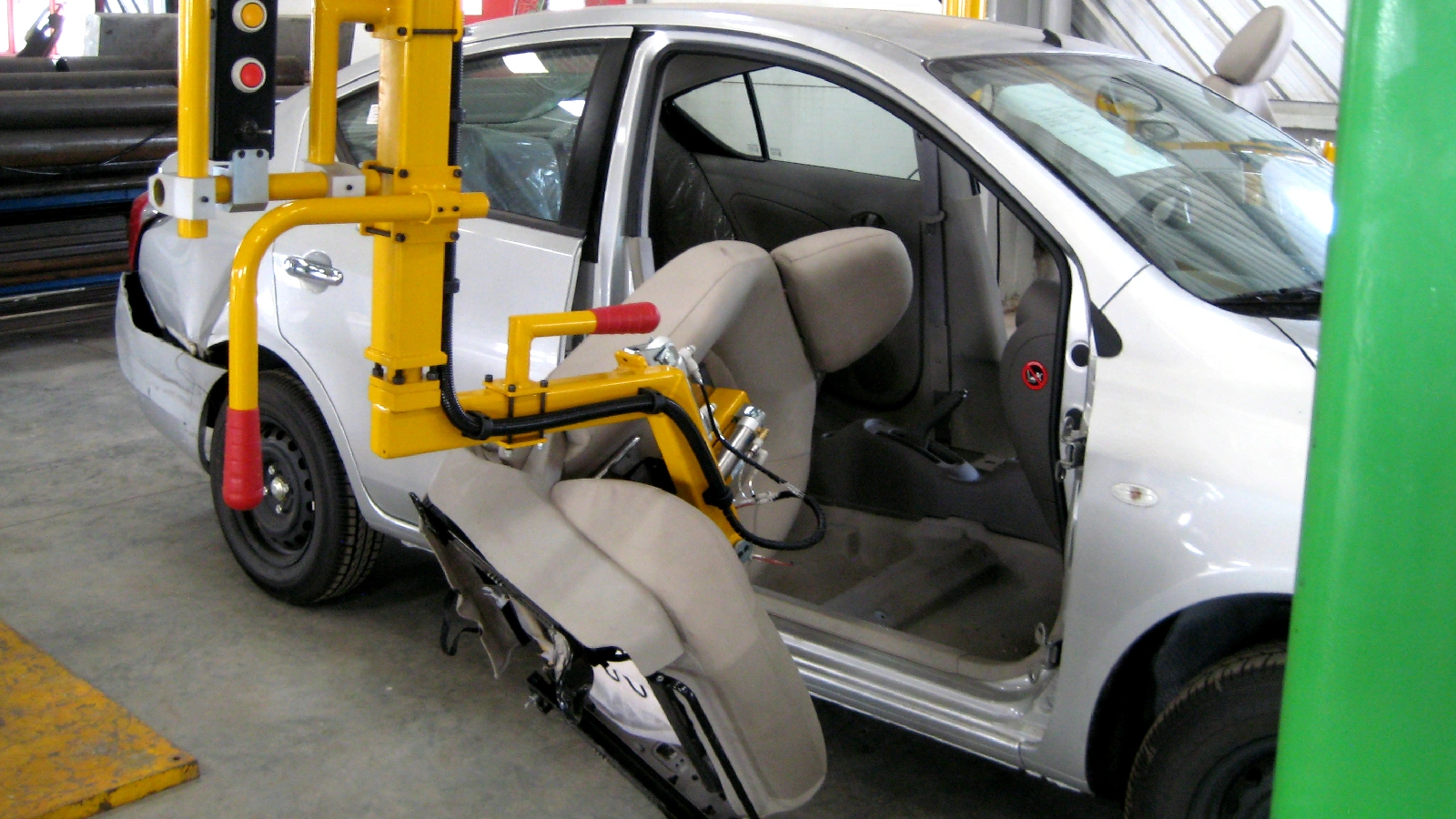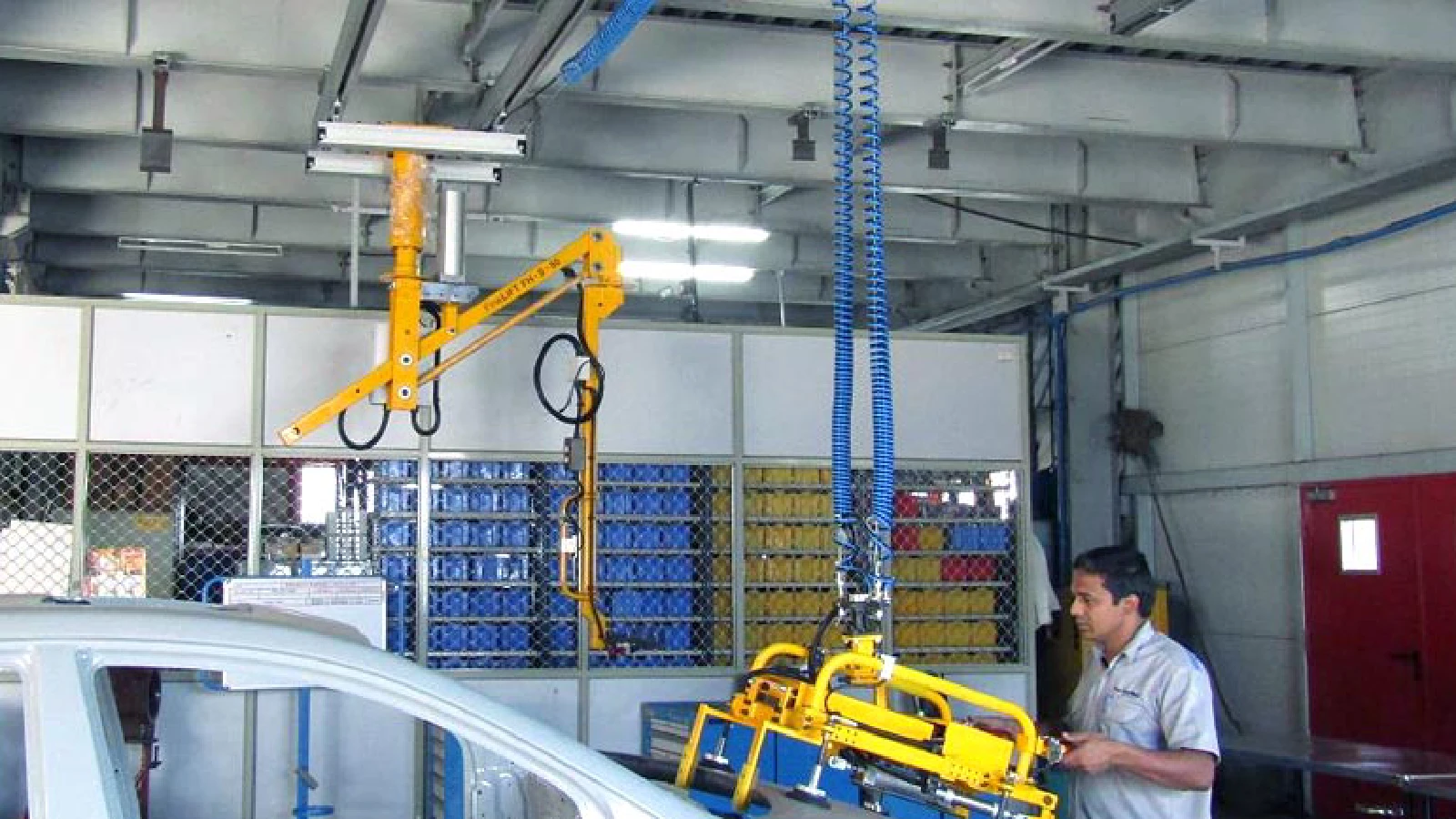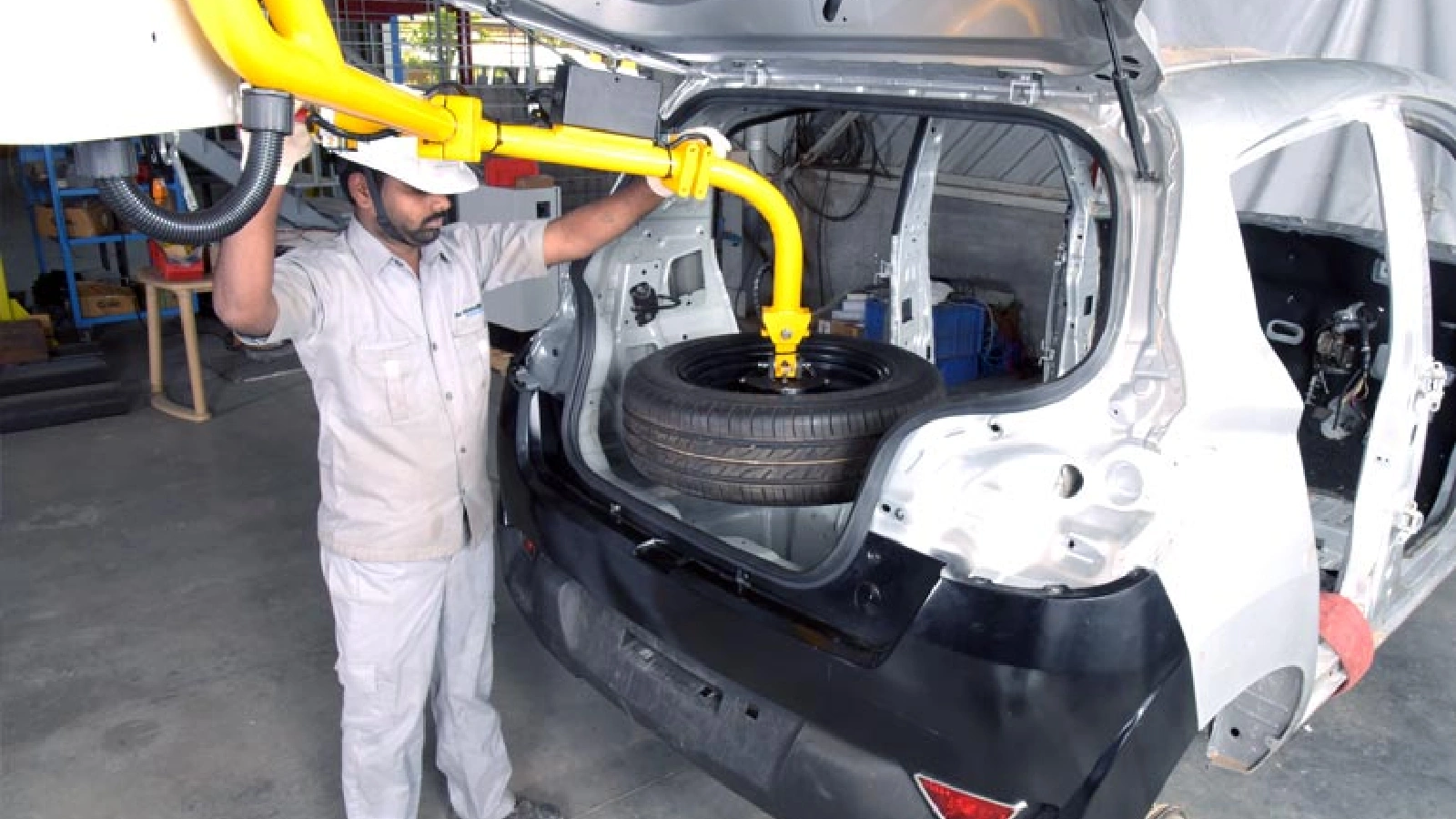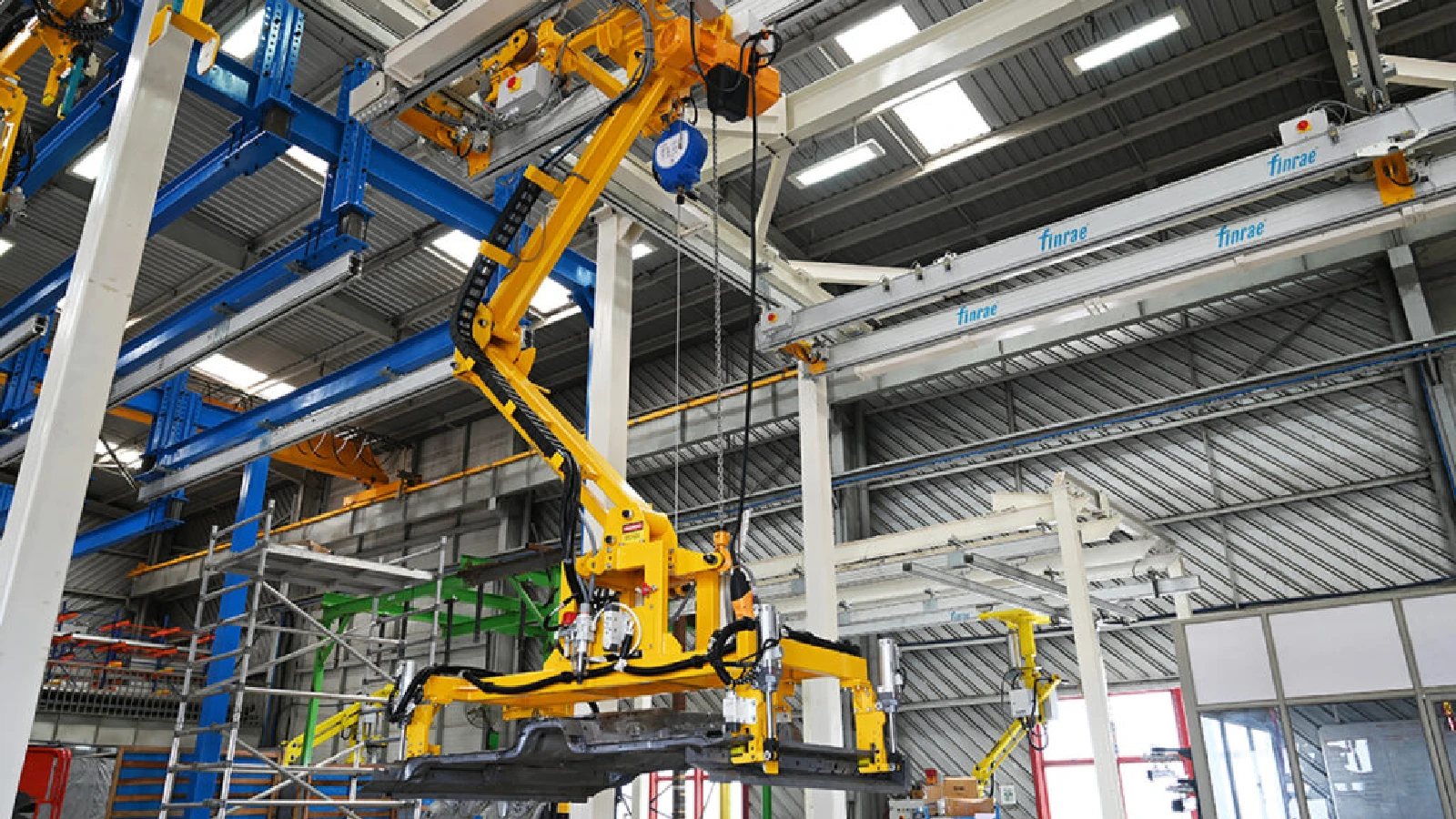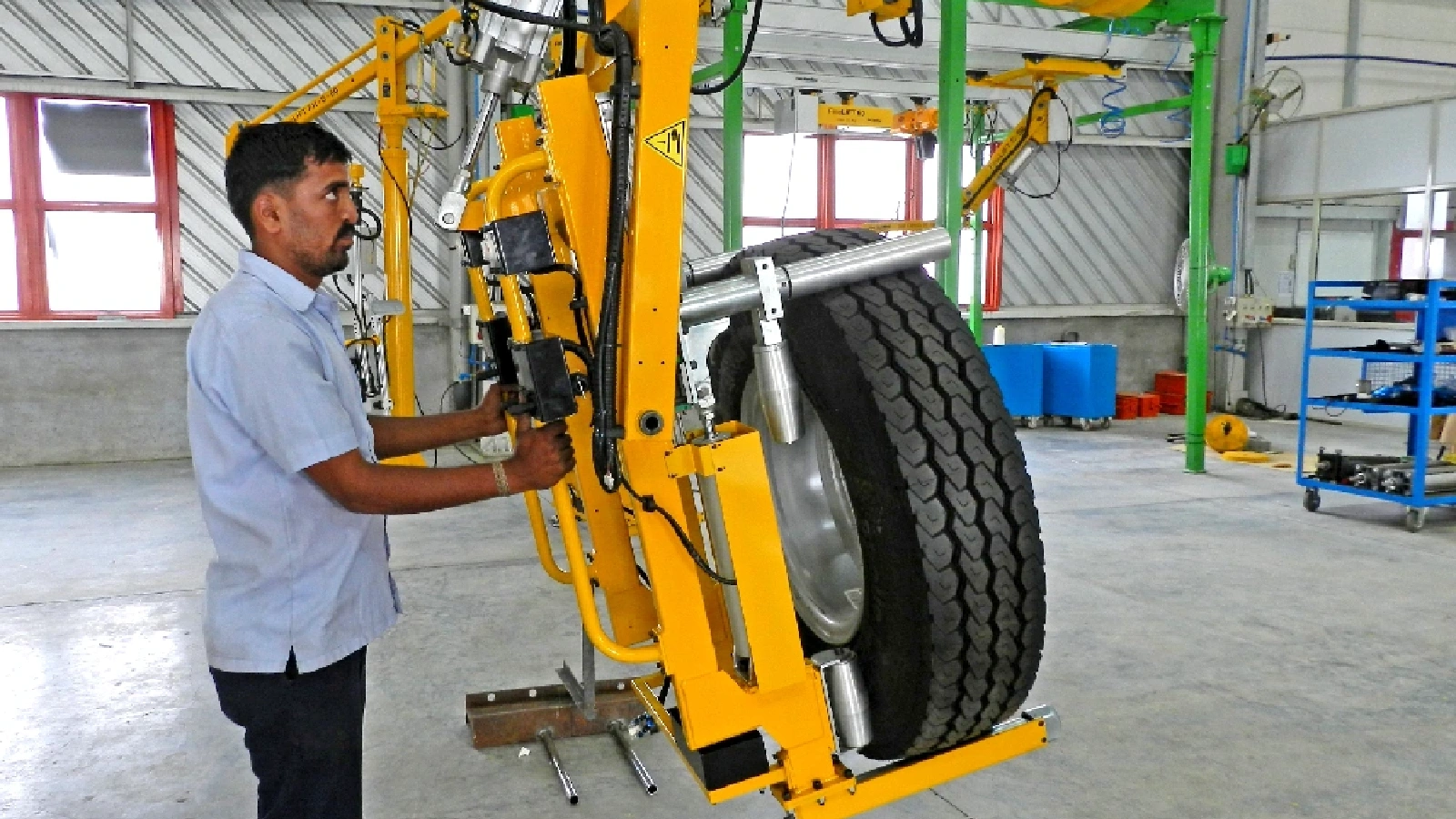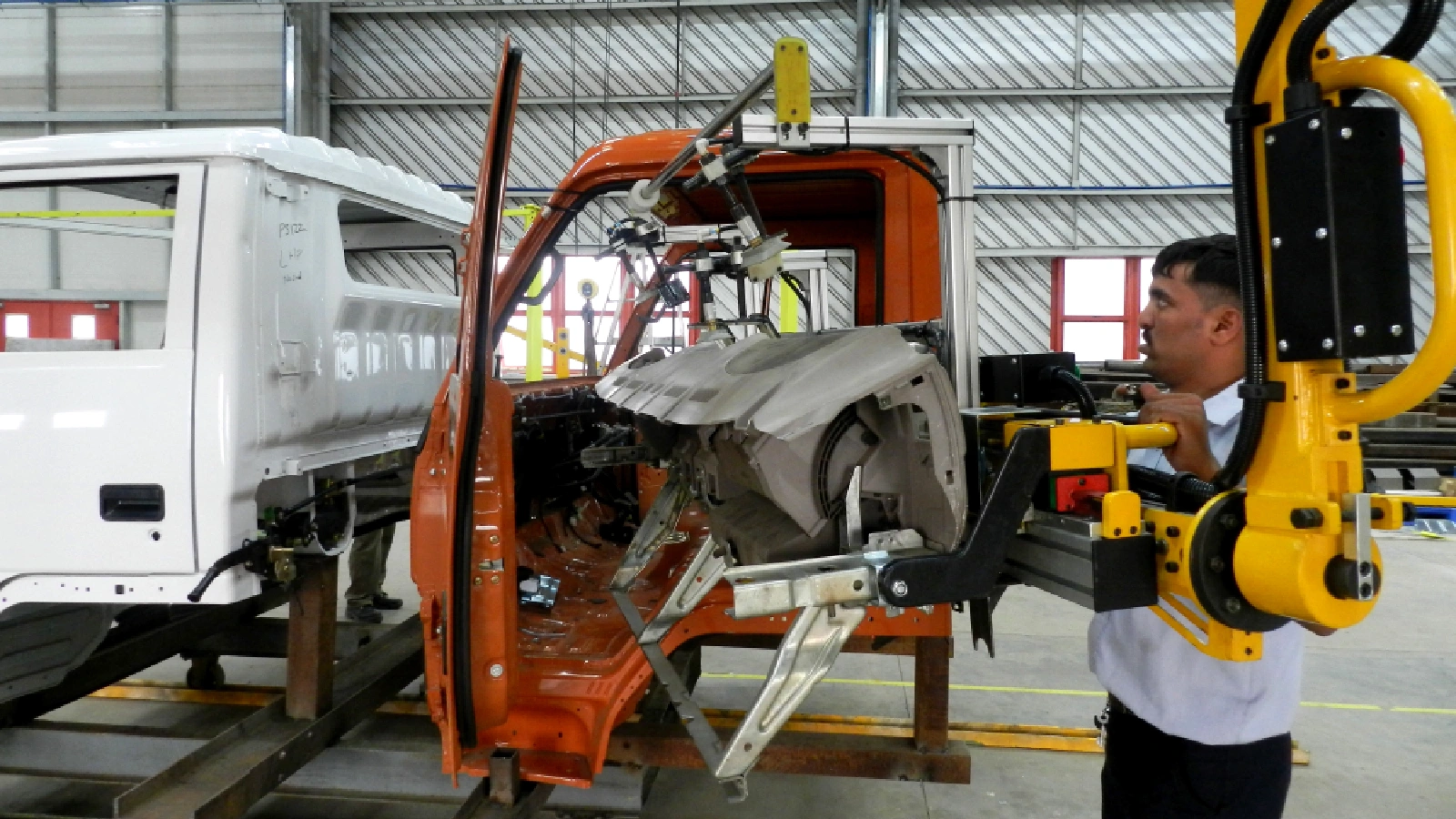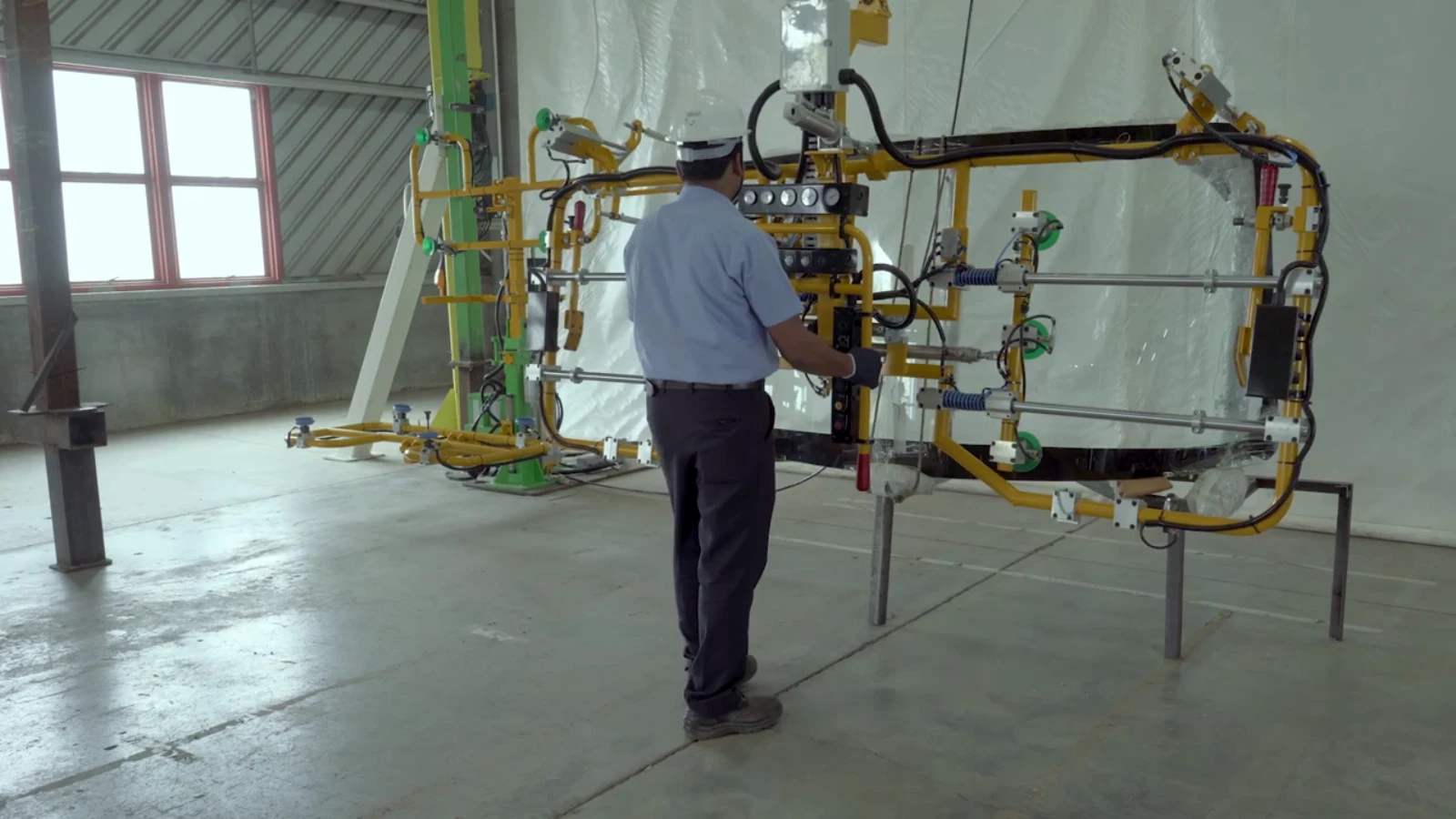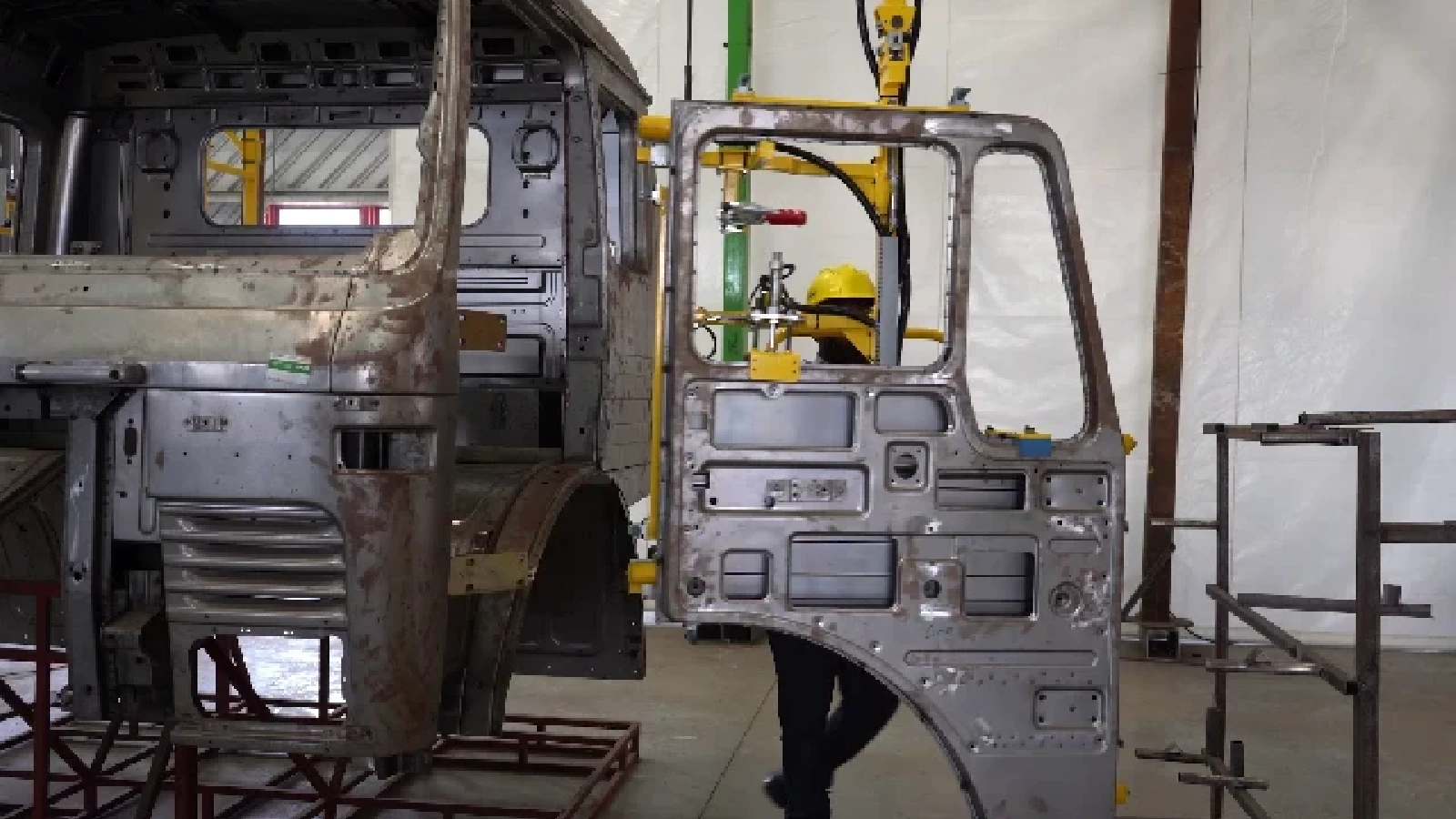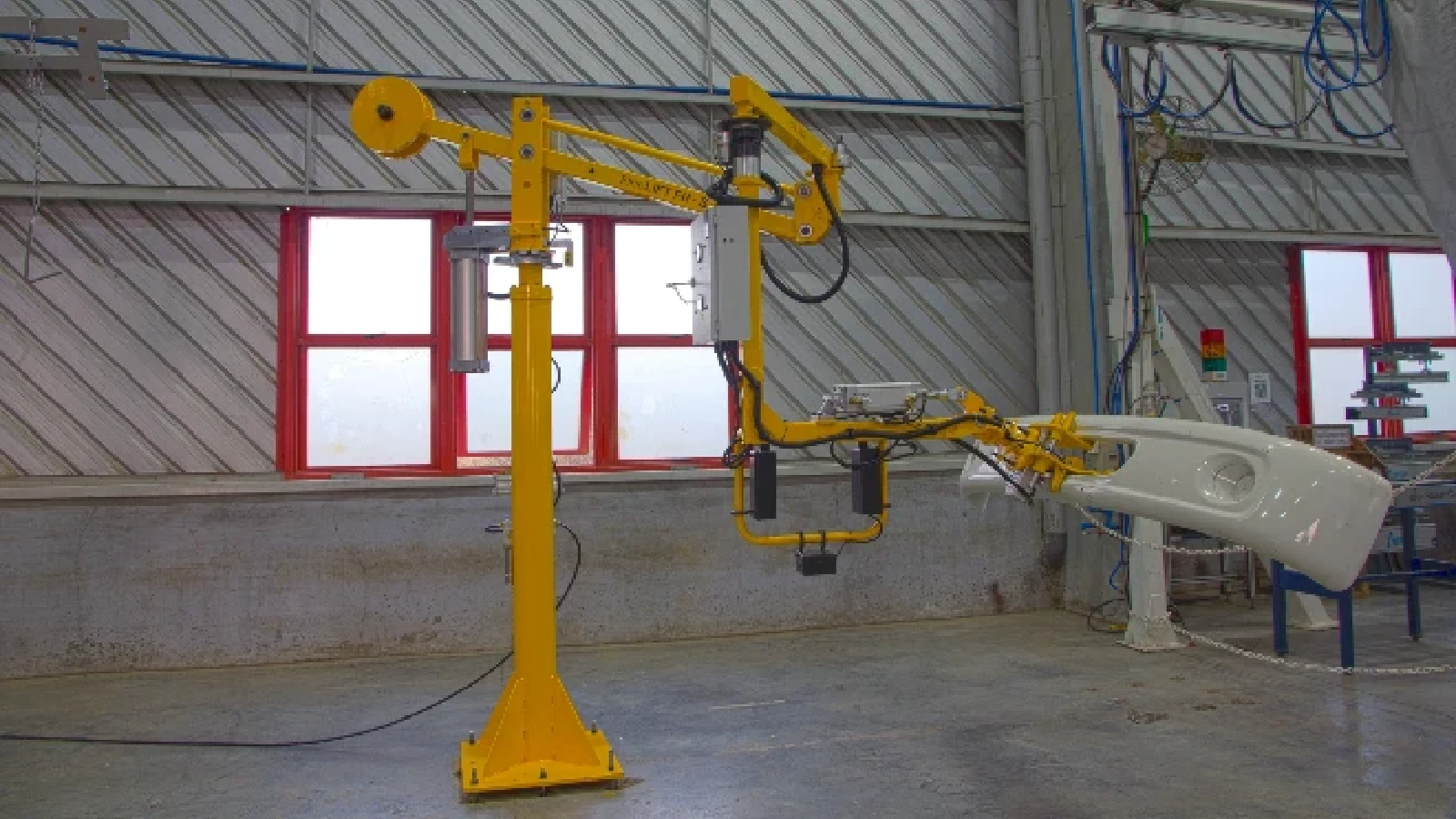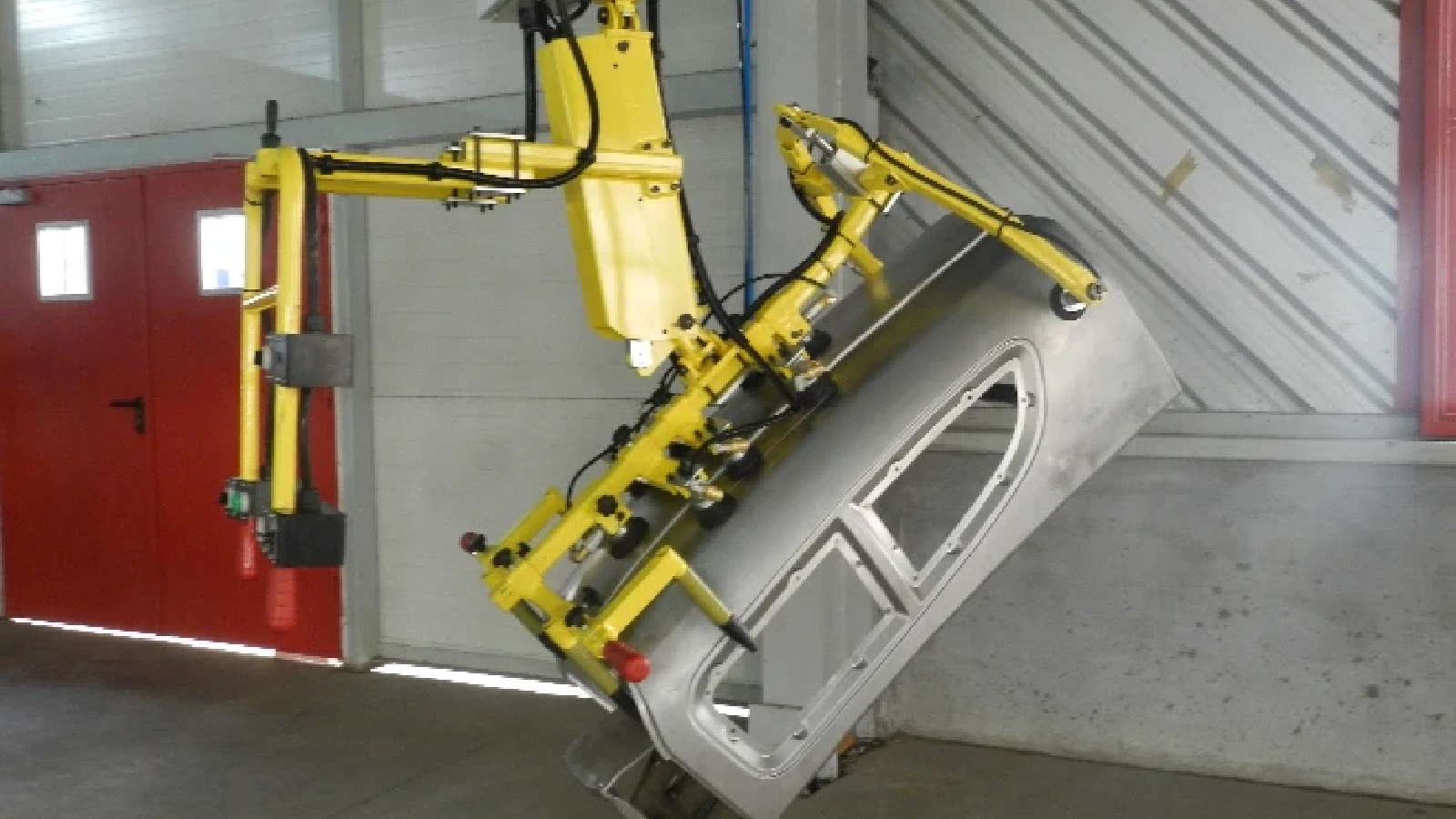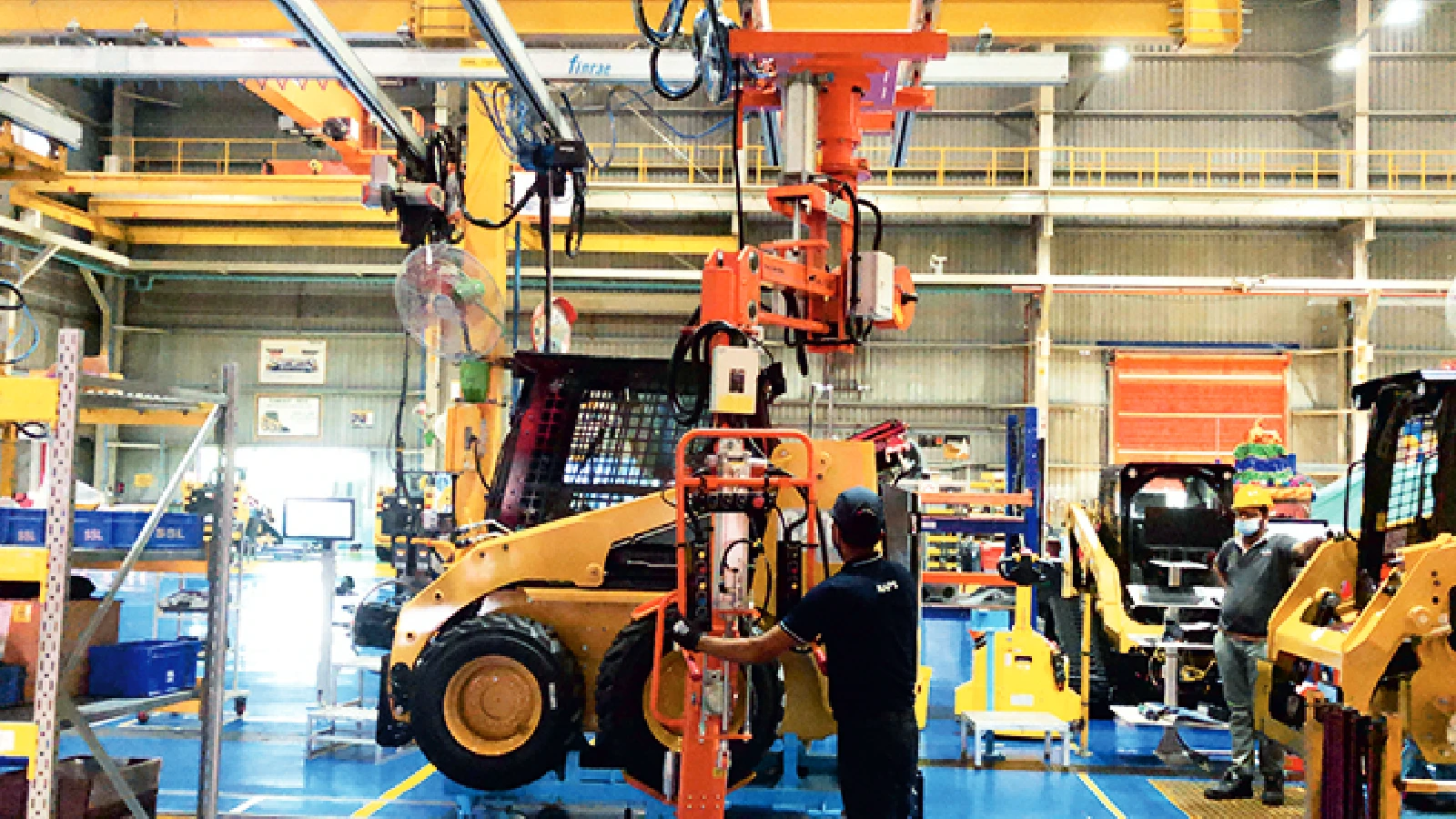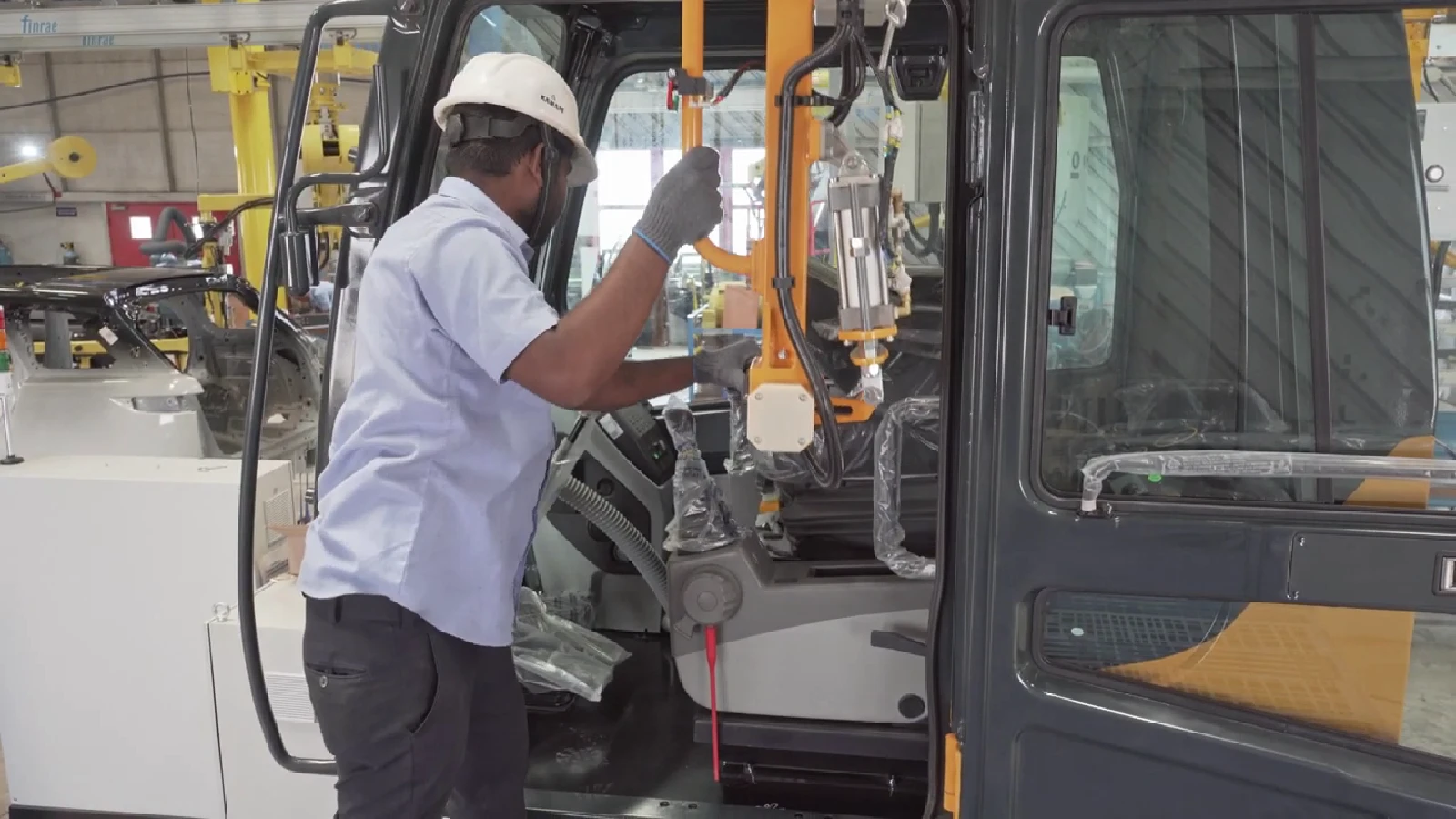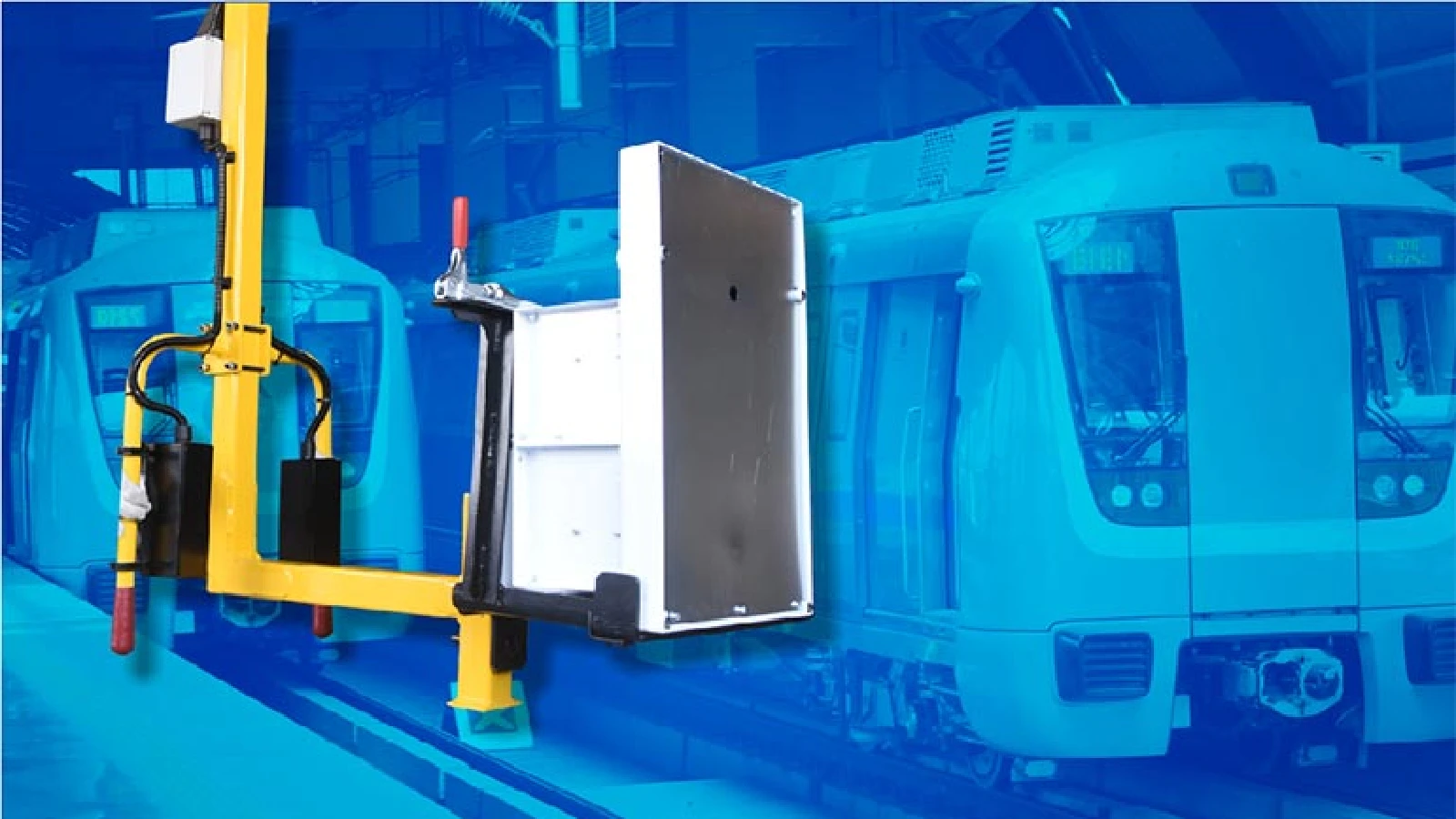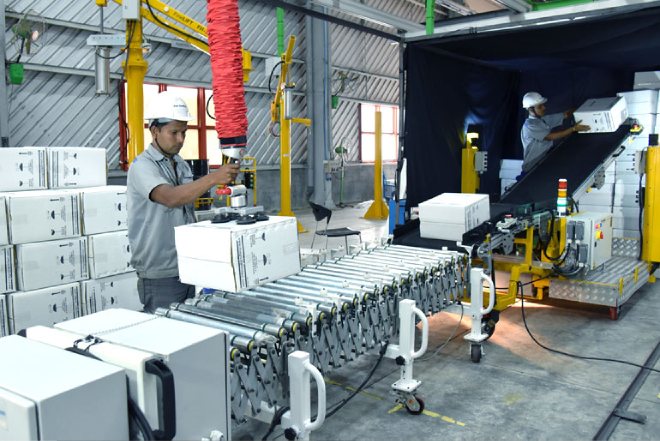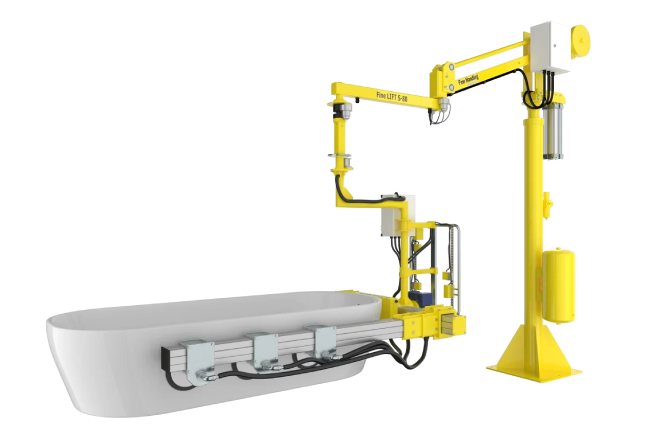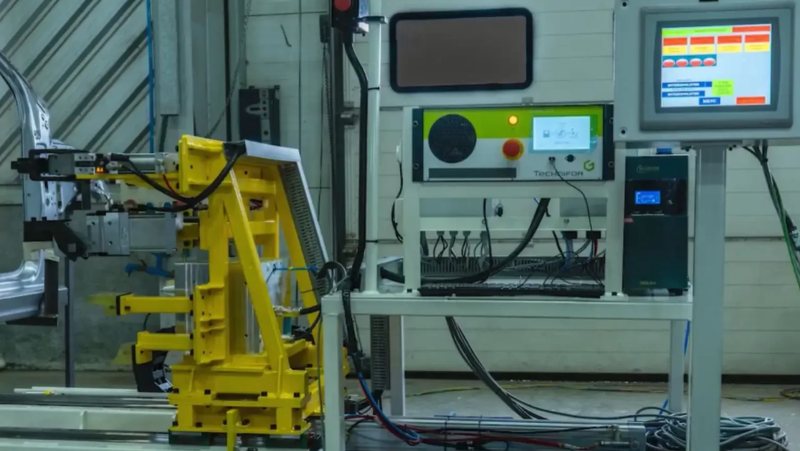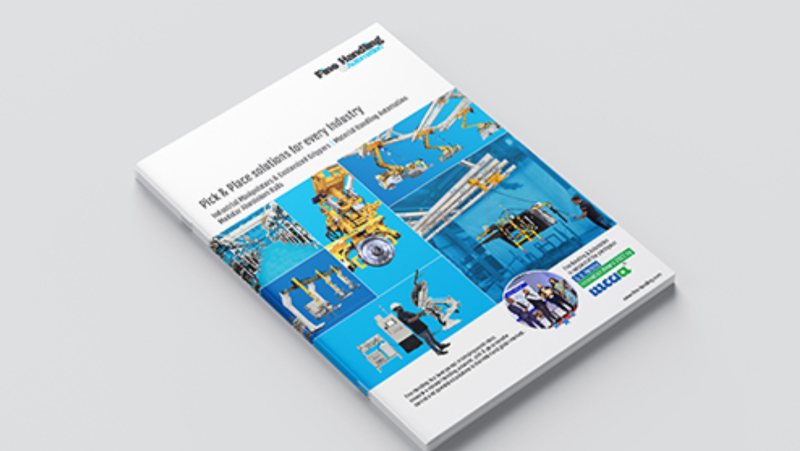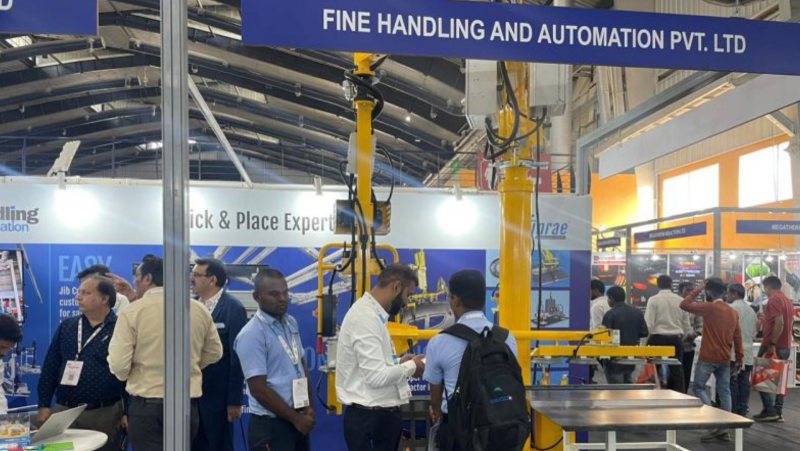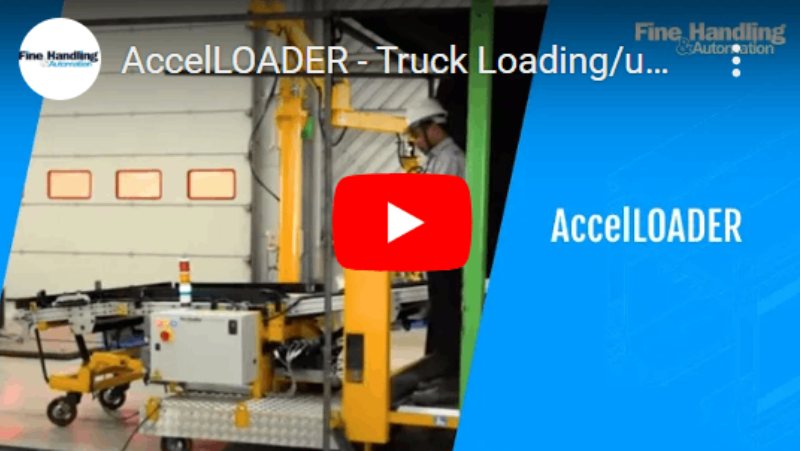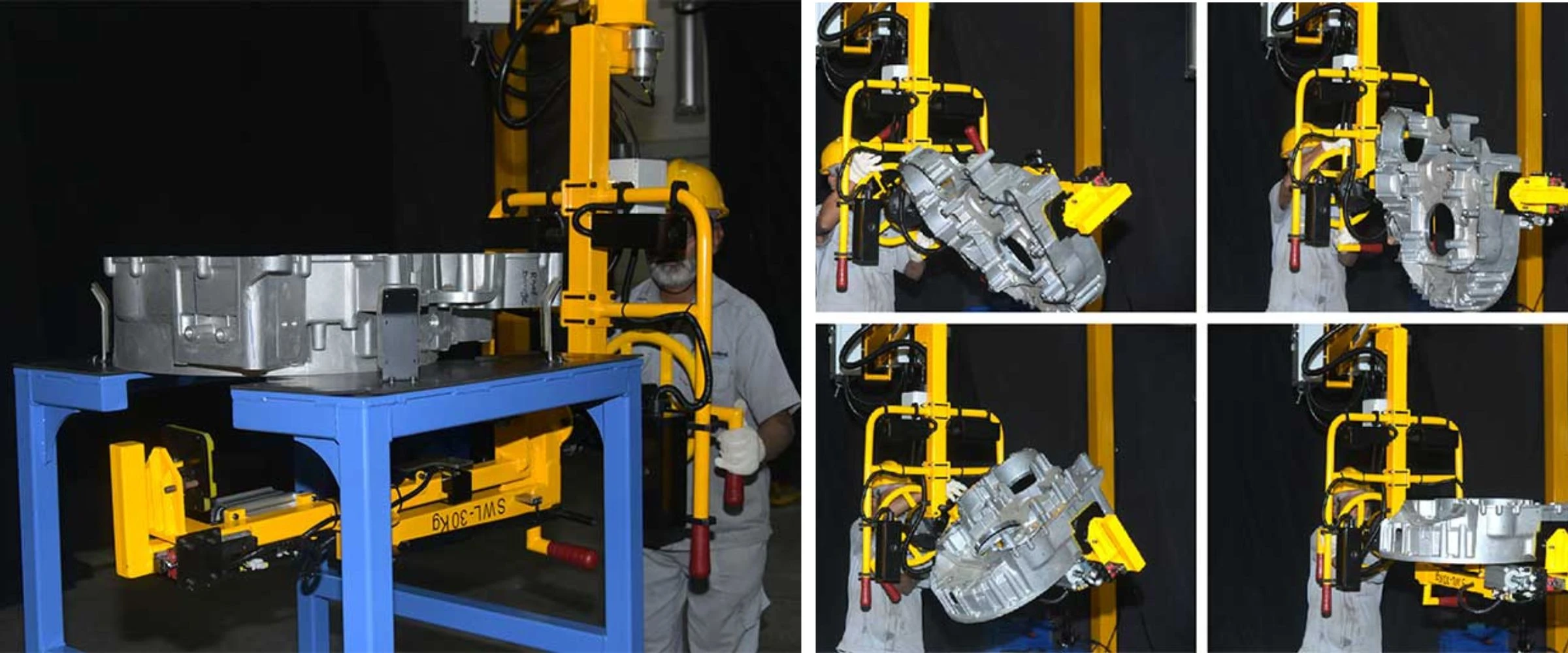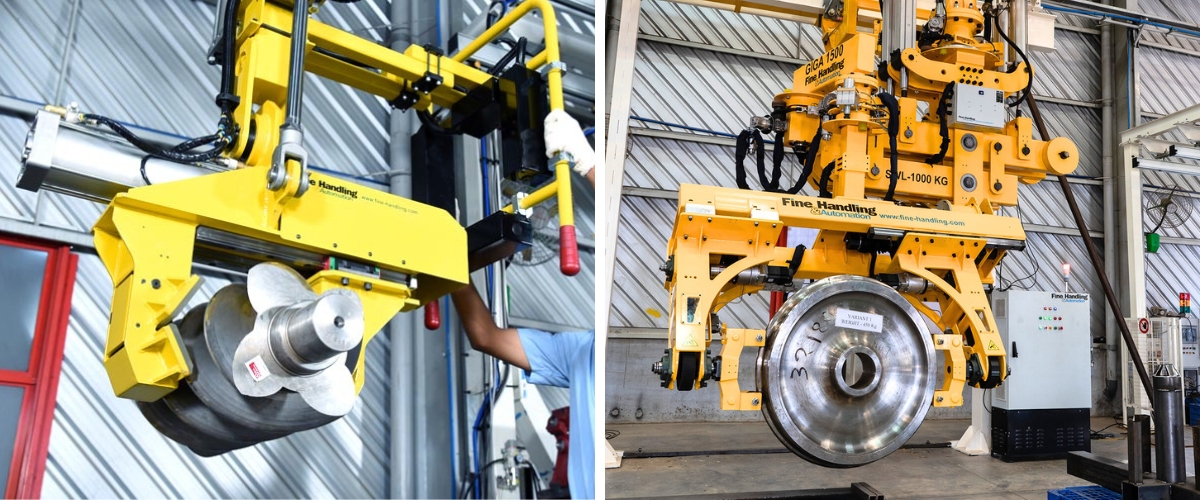Safe Flywheel Handling
Handling flywheels on an automotive assembly line presents several challenges, primarily due to their weight, size, and the need for precision in the assembly process. Fine Handling has successfully developed handling solution to address these challenges associated with flywheel handling on an automotive assembly line.
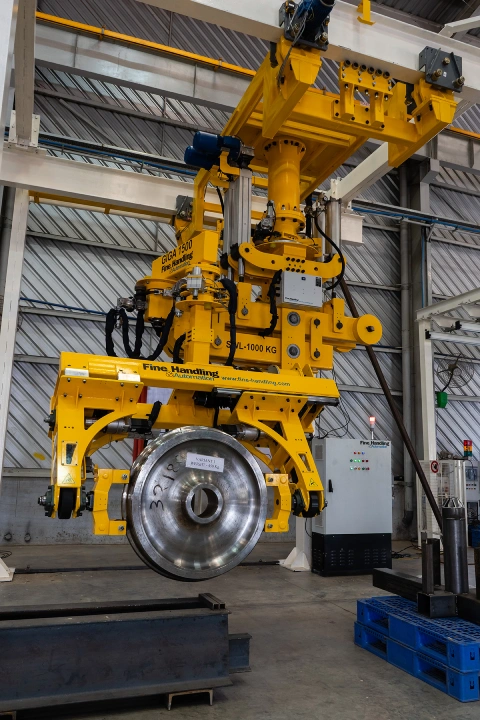
Improve ergonomics when lifting, carrying or manipulating Flywheel
Using industrial manipulators for handling flywheels lessens the physical strain on workers. Tailored grippers securely hold and move specific parts like flywheels. These manipulators and grippers can adapt to handle flywheels of various sizes and types, making them versatile for assembly lines.
- Flywheels can be relatively heavy, and their weight can vary depending on the type of vehicle and engine.
- Flywheels come in various sizes and shapes, depending on the engine and vehicle design.
- Proper alignment of the flywheel is critical for the engine's performance and longevity.
- Safety is a significant concern when handling flywheels, especially in a fast-paced assembly line environment.
- Ensuring the quality of flywheel installation is essential to avoid issues like misalignment or loose flywheels that could lead to engine damage or malfunction.
Manipulators and grippers improve safety by minimizing manual lifting of heavy flywheels, lowering the risk of accidents. They also boost the assembly line's speed and efficiency. Additionally, they can integrate with quality control systems to ensure each flywheel is correctly positioned and secured.

Industrial manipulators and customized grippers are indispensable in flywheel handling applications. They mitigate ergonomic issues, enhance safety, and optimize cycle times, making them invaluable tools in the manufacturing and maintenance of flywheel-based systems.

